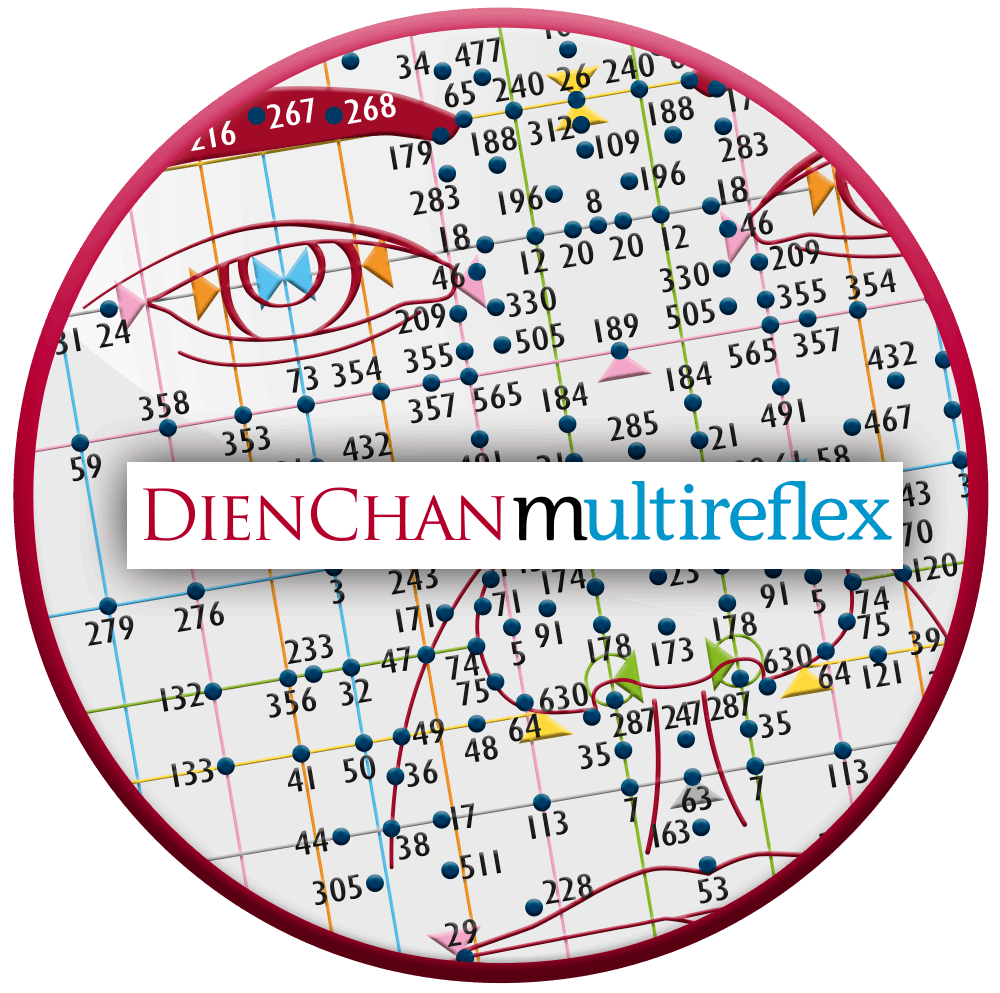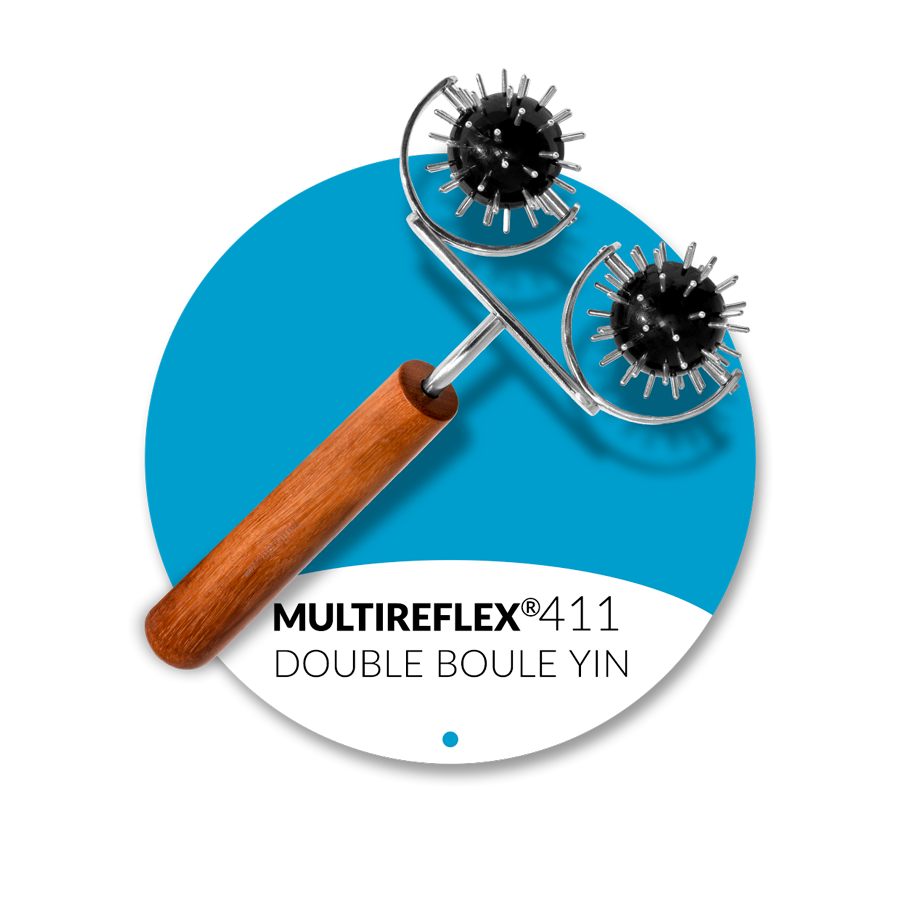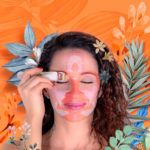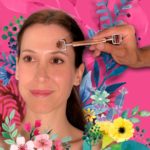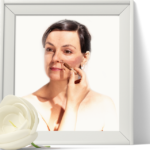Vascular pain & headaches
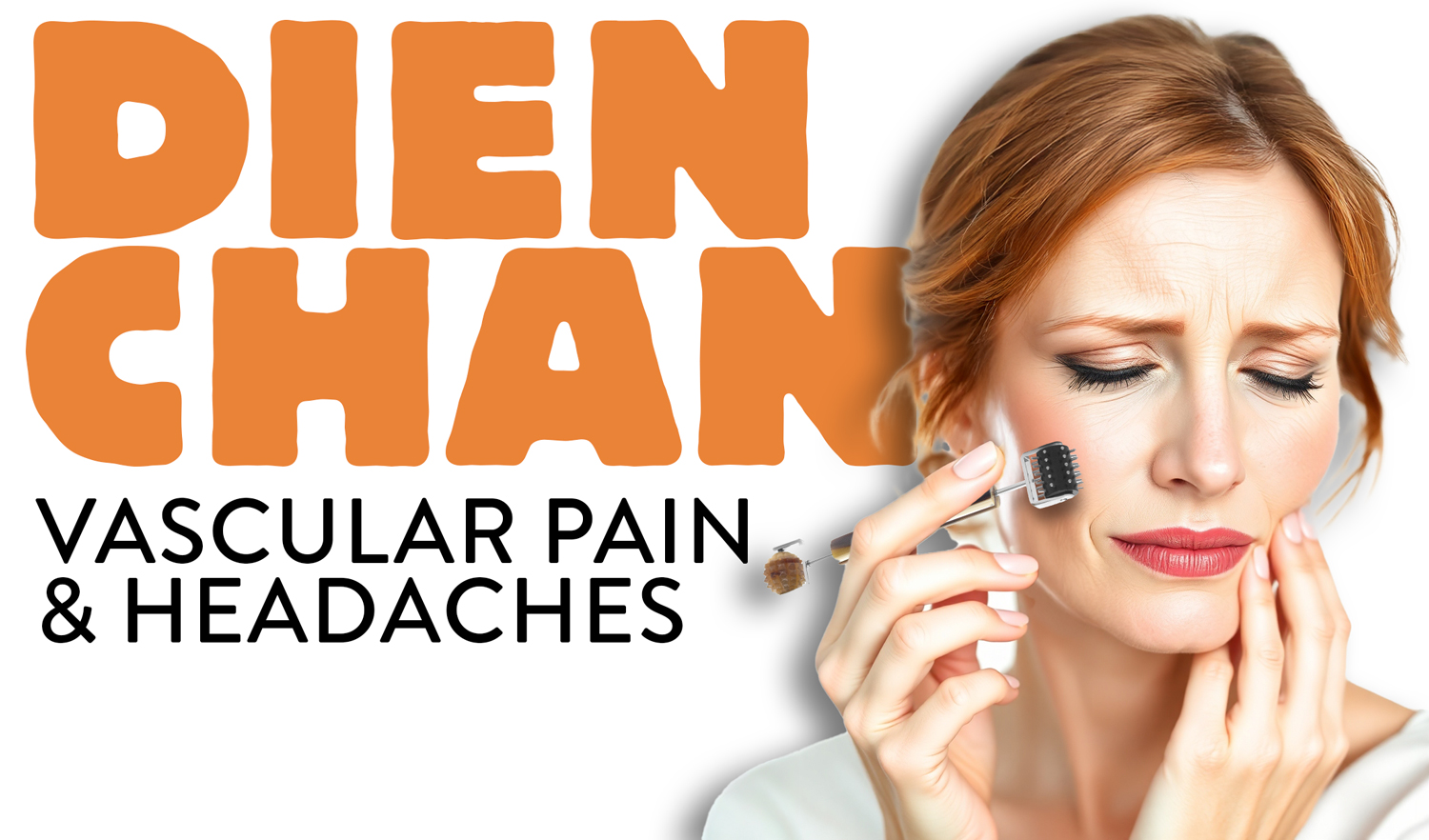
Cluster headaches, or vascular algias of the face, cause extremely intense unilateral pain around the eye, often accompanied by tearing, nasal congestion, and marked agitation. Their recurrence, sometimes several times a day, complicates management through conventional approaches.
Dien Chan offers non-drug protocols to relieve these debilitating episodes via targeted facial stimulation. A rigorous method taught by our international team since 2002.
What is Dien Chan?
Dien Chan is the original method of facial reflexology. This modern, natural technique works non-invasively using delicate instruments called multireflex tools.
By combining reflex diagrams projected on the face and body with precise point stimulation, Dien Chan tailors care to each individual’s needs.
The ISMDC (International School of Multireflexology – Dien Chan) has taught this approach since 2002 in Europe and the Americas.
Authors of “The ABC of Dien Chan” (Éditions Grancher, Paris) in French, “Multireflexology Dien Chan” in English and the Faceasit app (Apple Store), we support practitioners seeking to create deep, personalised, and effective treatments.
Dien Chan draws from both Western medicine and Traditional Chinese Medicine (TCM). Its goal: to stimulate the body’s natural self-regulation abilities and restore energy flow to prevent blockages.
Though the list of symptoms may seem daunting and vascular algias present a complex therapeutic challenge, Dien Chan offers a relevant approach to relieve many. The key lies in developing a holistic, adapted care plan.
1| General state

Our priority will be to calm the nervous system, often overstimulated in this condition.
Begin by soothing the person with the Yin rake nº416, gently raking the scalp for at least 4 minutes. If the person is particularly stressed, delicately tap bqc·points 124· 34· with the Little-hammer nº128.
› Full details of this anti-stress protocol and its multireflex tools are in this dossier: tools.dienchan.pro/en/stress
› For a deeper article about emotions: https://www.dienchan.academy/dienchan-emotional
2| Body step
Even if pain is localised (around the eyes), a global approach remains essential. Dien Chan, through its reflex logic, identifies and stimulates body zones linked to the ocular sphere.
It is highly interesting to stimulate the back of the head at eye level using the Massage stick nº424. If this part of the skull is very sensitive, massage it for at least 3 minutes in circular motions, as if loosening the surface.
Another body zone linked to the eyes is located on the back at chest height. With the same Massage stick, seek out muscle tensions and massage them.
If this massage is uncomfortable, prefer the Big-hammer nº430 to tap the tense area with its saucer side (yin effect).
When one knows reflex diagrams, it becomes clear that the eyes of Madame Yin (the blue lady on the extremities chart of the face) coincide with the knees of the reflex diagram called “Penfield,” as well as with the pulp of each little finger.
These relationships invite us to seek sensitive points on the knees and little fingers. Use the large detector of the Comet nº133 to test sensitivity, then choose a yin roller to relieve tension.
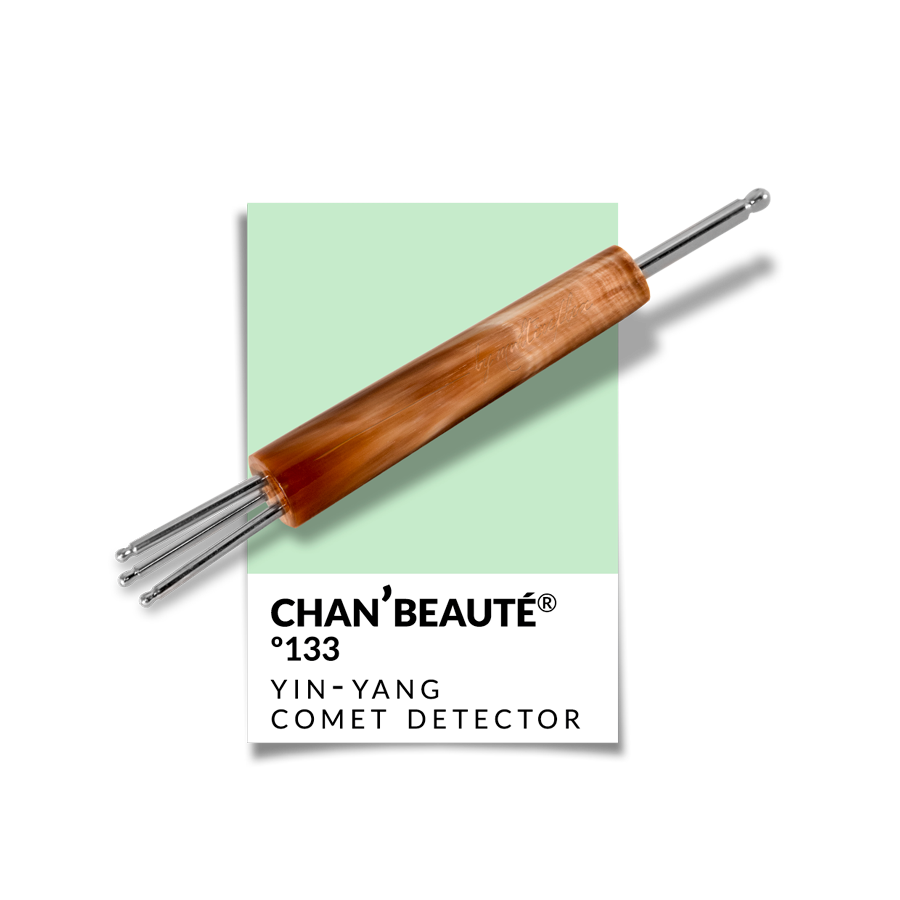

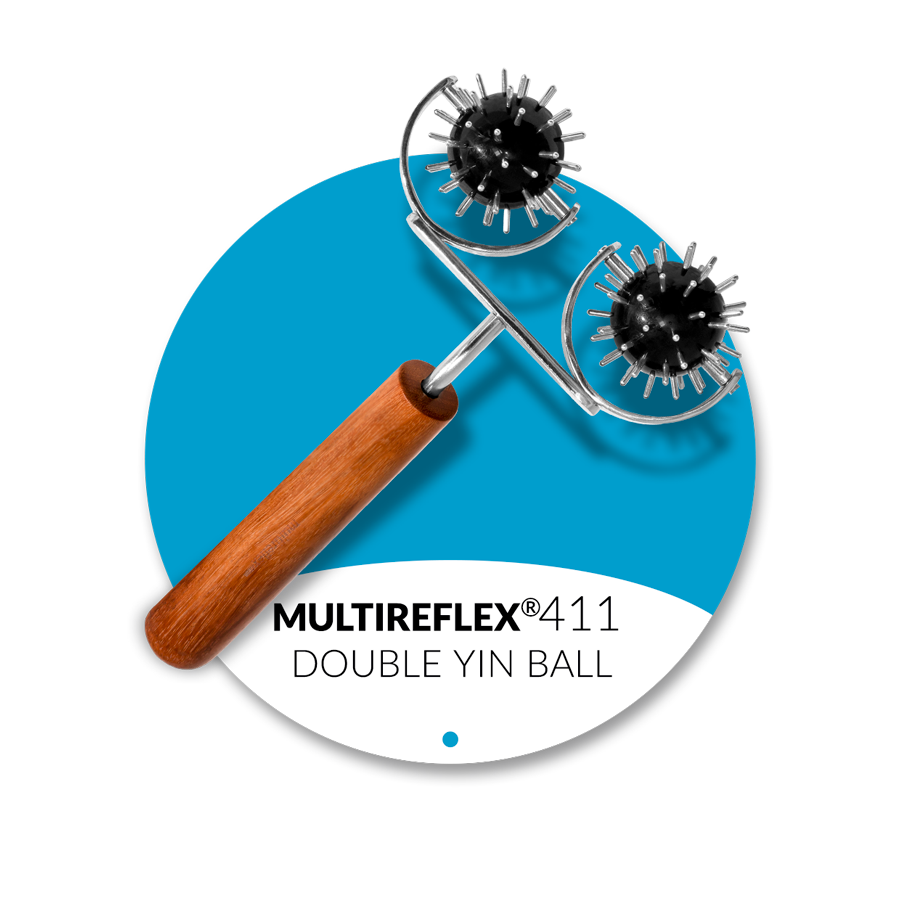
For the knees, the Double yin ball nº411 or the Double mini yin roller nº308 will be most suitable. To massage the pulp of the little fingers, prefer the yin roller of the Yin-yang roller nº206.
3| Reflex step
After establishing reflex correspondences, we can refine the approach using specific reflex diagrams, then consolidate the effects with a personalised formula of bqc·points.
Many diagrams propose reflex zones linked to the eyes, as every reflex head includes them. For vascular algias of the face, some of these diagrams suggest targeted bqc·points to integrate into the consolidation step.
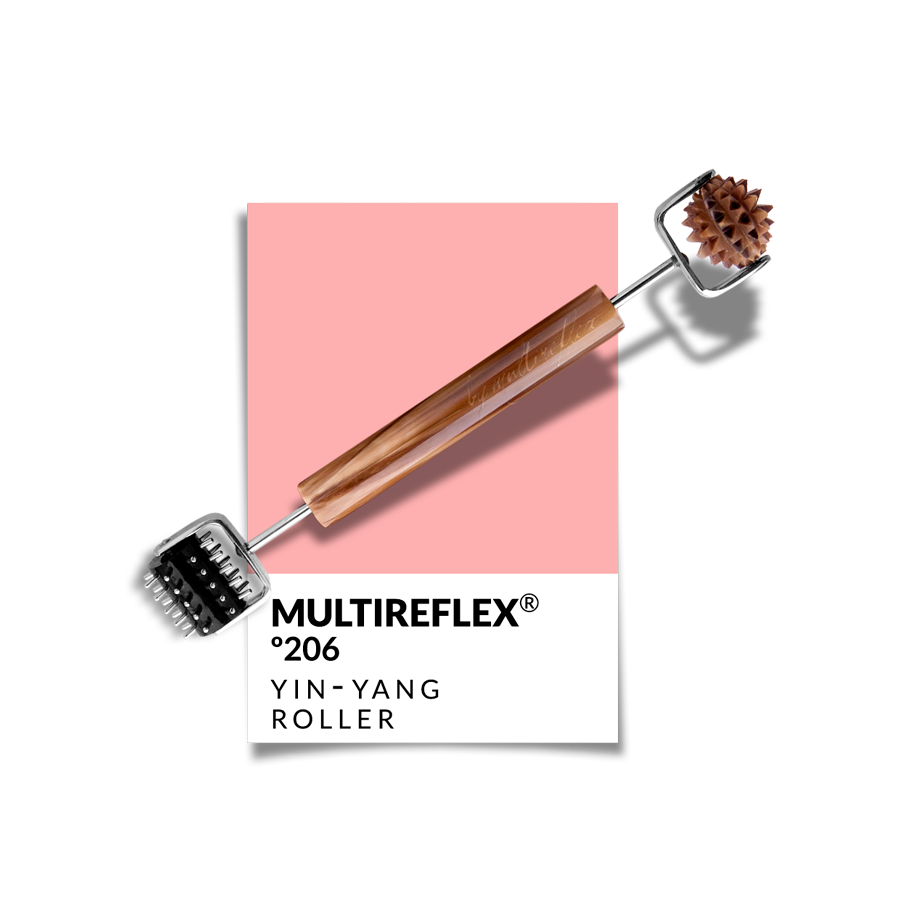
However, it is essential not to neglect local work around the eyes to relieve this pain.
Given the acute (rather yang) nature of this disorder, a multireflex tool with a yin effect is preferred. The yin roller of the Yin-yang roller nº206 is particularly recommended for working on the eyebrow arch.
As for the smooth brass sphere of the concave tool nº207, it proves very effective for relaxing ocular tension. Roll it gently about fifty times over each eyelid.
Take care to check the client’s feedback and any perceived relief.

This local step is all the more relevant as it follows the two previous steps, thus inviting the brain to focus attention on the affected area.
Further proof that Dien Chan is not limited to mechanical point activation but is part of a holistic, progressive, and sensory strategy.
4| Consolidation
In this article, we propose a constellation of bqc·points to test in order to create a tailor-made formula, adapted to each client’s unique needs.
a| Nervous system
Although some of these symptoms were already addressed during the first step dedicated to general state, it’s useful to keep them in mind to enrich the evaluation and dialogue with the client.
- Motor agitation (inability to remain still during crisis)
- Marked irritability or acute stress during flare-ups
- Hypersensitivity to certain triggers: light, strong smells, alcohol, etc.
b| Nasal congestion or runny nose
If present, here are some bqc·points to test:
491· 61· which stimulate the Metal element that affects mucus liquefaction and ocular disorders.
c| Eyes
Intense, unilateral pain around the eye, drooping eyelid, excessive tearing on painful side, ocular redness…
65· 188· 555·: ocular disorders, headaches and improves cerebral irrigation.
184· 34·: cranial motor-ocular and optic nerves
354· 18· 330·: excess tears
235· 59· 6· 50·: redirect vital energy to the eyes

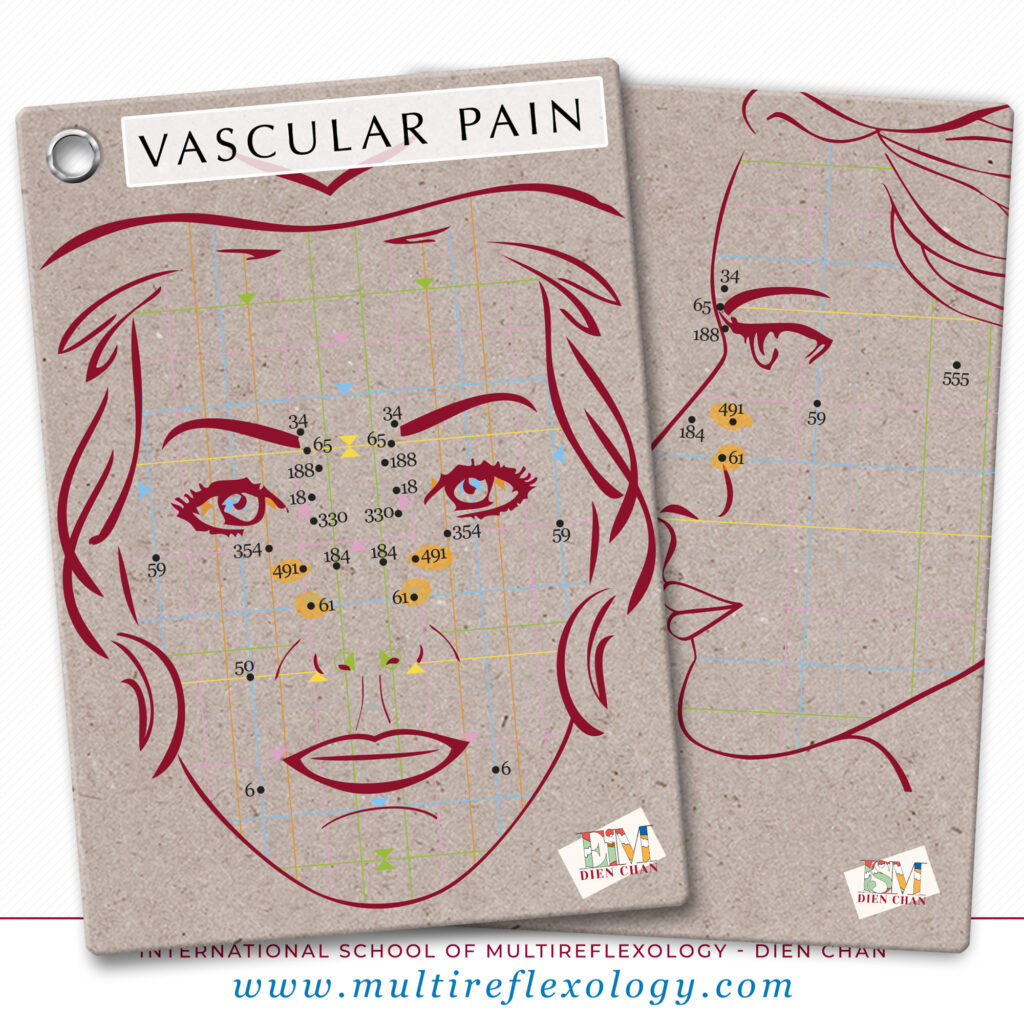
A little reminder in the form of a wink (pun intended):
With the Faceasit’clinic app, you’ll find many more bqc·points than those proposed in this article.
Yes, we’re generous!
But beware, these points form constellations, not planetary alignments – though the results might still make you see stars.
Our professional advice
Test them, consult their detailed files and keep only the most sensitive ones.
Like a chef tasting before seasoning, compose your tailor-made formula to adapt to your client’s personalised version of the disorder.
And because our mission is to make you truly autonomous, our trainings, articles and tools are here to stimulate your creativity so you can accept all challenges, even the most Vietnamese head-scratchers.
5| The prescription
At the end of the session, using a multireflex tool (chosen according to its effectiveness during the session) will allow the patient to prolong the therapeutic action independently at the first signs of a crisis.
This synergy between clinic care and self-treatment promotes deeper, longer-lasting results, paving the way for significant improvements in subsequent sessions.
Vascular algias of the face are particularly painful and difficult to treat. Dien Chan offers a natural and effective alternative by combining facial reflexology with targeted stimulation using multireflex tools.
Through a structured and personalised approach, this method calms the nervous system, restores energy balance and reduces crisis frequency. Self-treatment between sessions prolongs benefits and reinforces results.
Thus, Dien Chan establishes itself as an innovative solution to durably improve quality of life for affected individuals.
This is why it’s essential to learn it from a serious institution, without risky interpretations or oversimplifications.
With four complete training modules, without dilution or unrealistic promises, you’ll have solid foundations to become the architect of personalised, effective care protocols.
Ankle sprain: comprehensive natural approach with Dien Chan
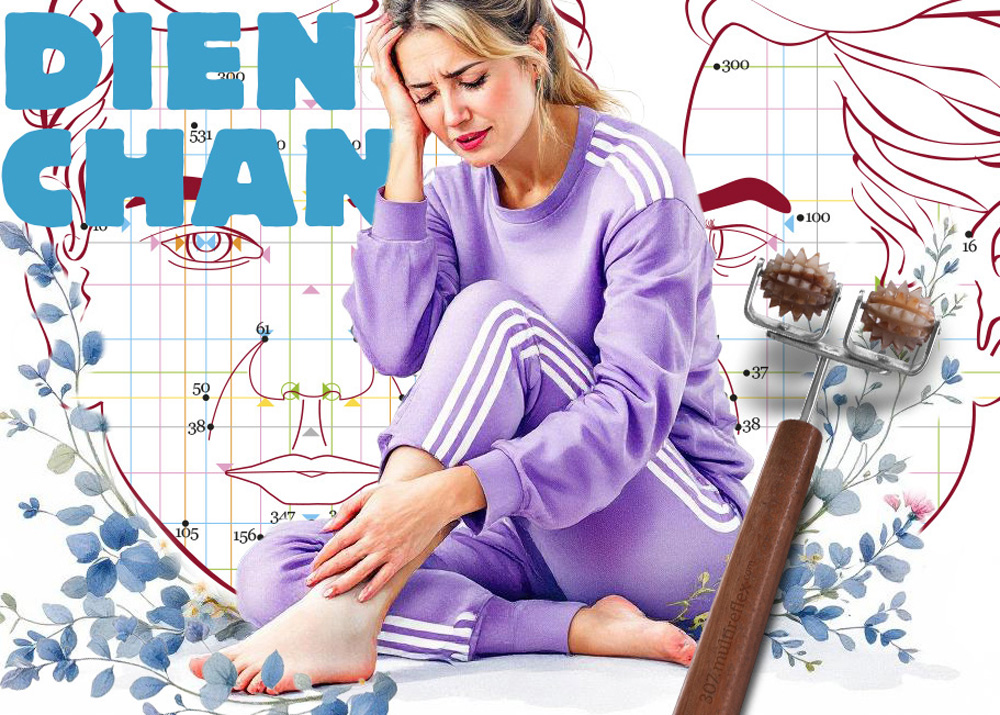
Ankle sprains are common injuries, typically caused by excessive twisting that stretches or tears ligaments. Whether mild or severe, they usually present with immediate pain, swelling, bruising and difficulty bearing weight. Many practitioners now turn to complementary approaches to accelerate healing and provide lasting relief. Dien Chan offers an effective solution, working deeply to promote tissue regeneration.
Why choose heat over cold for sprains?
When treating ankle sprains, the conventional approach often involves applying cold to reduce inflammation. However, Dien Chan practitioners pay special attention to the term “inflammation”. While counterintuitive, inflammation – often perceived as excess of yang – is actually a crucial stage of the healing process.
Abrupt cooling may temporarily numb and relieve pain, but doesn’t promote tissue regeneration.
Heat serves as a powerful healing vector, stimulating circulation and helping tissues repair from within. This is why Dien Chan favours energising techniques like yang tools and moxibustion to support the body’s natural restorative capacity.
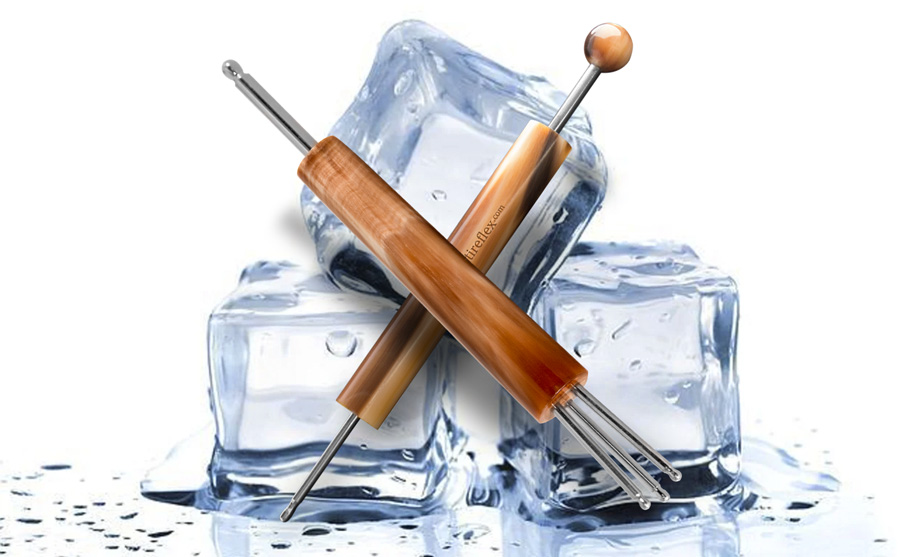
Key stages of sprain treatment in Dien Chan
Ankle sprain treatment in Dien Chan involves multiple phases, combining local and reflex action for optimal effectiveness.
Sample treatment plan
Phase 1: deep local body work
Preparing the area with a yang multireflex tool. The first stage involves working directly on the injured ankle with gentle precision.
Begin by carefully rolling the area around the ankle with the Double mini yang ball nº307. This prepares the tissues, activates circulation and facilitates deeper heat penetration.
For severe pain, remember the 8 principles of Dien Chan, which we explore in depth during the first module of DienChan’reflex training.
These principles allow adaptation, such as working on the area “around the ankle” or even the opposite ankle.
Checking for sensitive points on the wrist (which reflects the ankle) is also beneficial.
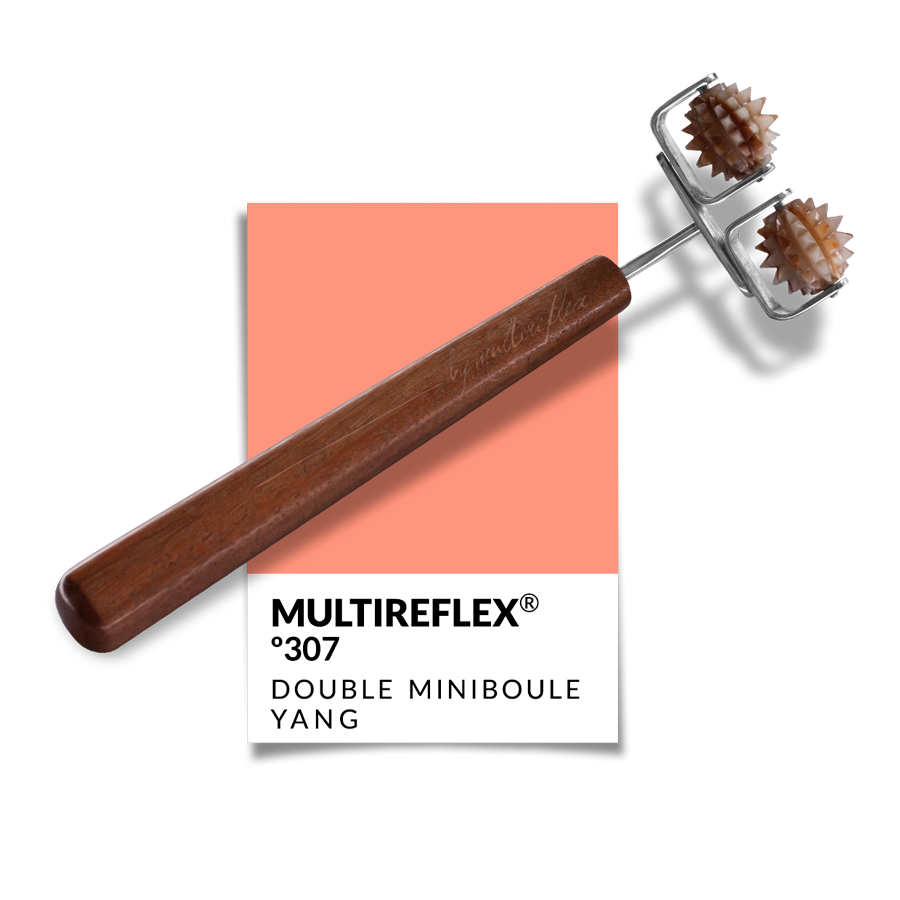
Moxibustion: An essential ally
After preparing the area, moxibustion completes the treatment. The glowing moxa stick, used with “spreading” or “sweeping” techniques, delivers precise, deep heat penetrating to the joint’s core. This allows heat circulation and releases deep tensions.
We emphasise that in Dien Chan, we never seek to burn the skin. Our technique’s power lies in its gentleness.
Moxibustion techniques are covered extensively in our complete training programme.
To support practitioners and expand knowledge, we offer an eBook with an instructional video on Dien Chan moxibustion.
Phase 2: facial reflex work
After local body work, we stimulate reflex zones on the face.
Use the small yang ball of the Yin-yang roller nº206 to roll ankle and wrist reflex zones on the face. For precision, sweep with the large detector of the Comet nº133 on selected reflex zones to locate the most sensitive points.
As shown in Mr Yang’s diagram, carefully follow reflex zone correspondences. Roll each selected zone at least fifty times for effective stimulation.

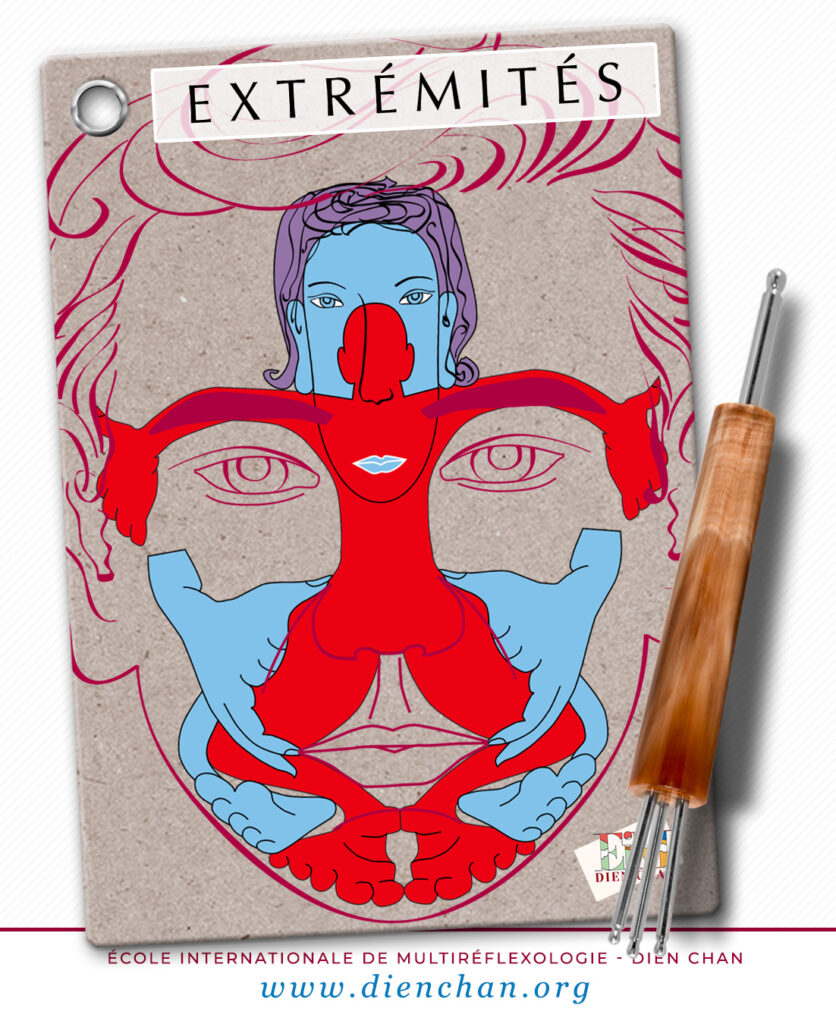
phase 3: composing your personalised formula
Beyond facial and bodily stimulations, Dien Chan allows you to consolidate the treatment using specific bqc·points. Rather than relying on ready-made formulas—which may serve as inspiration but rarely suit every case—the aim is to design personalised solutions, in the manner of “magistral formulas”.
For an ankle sprain, here is a constellation of bqc·points to explore:
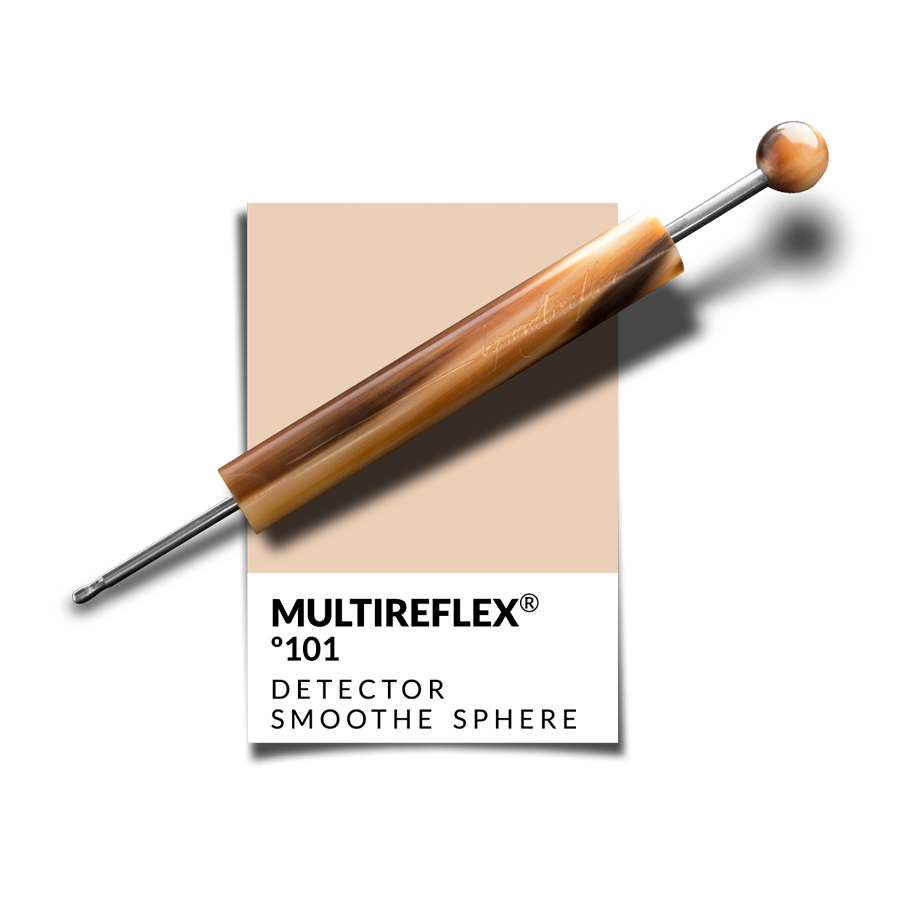
- The ankles: 156· 157· 105· 100· 310·
- To soften the tendons: 16· 61· 50· 347·
- To treat the joint: 38· 127·
- To relieve the muscles: 39· 37· 531· 300·
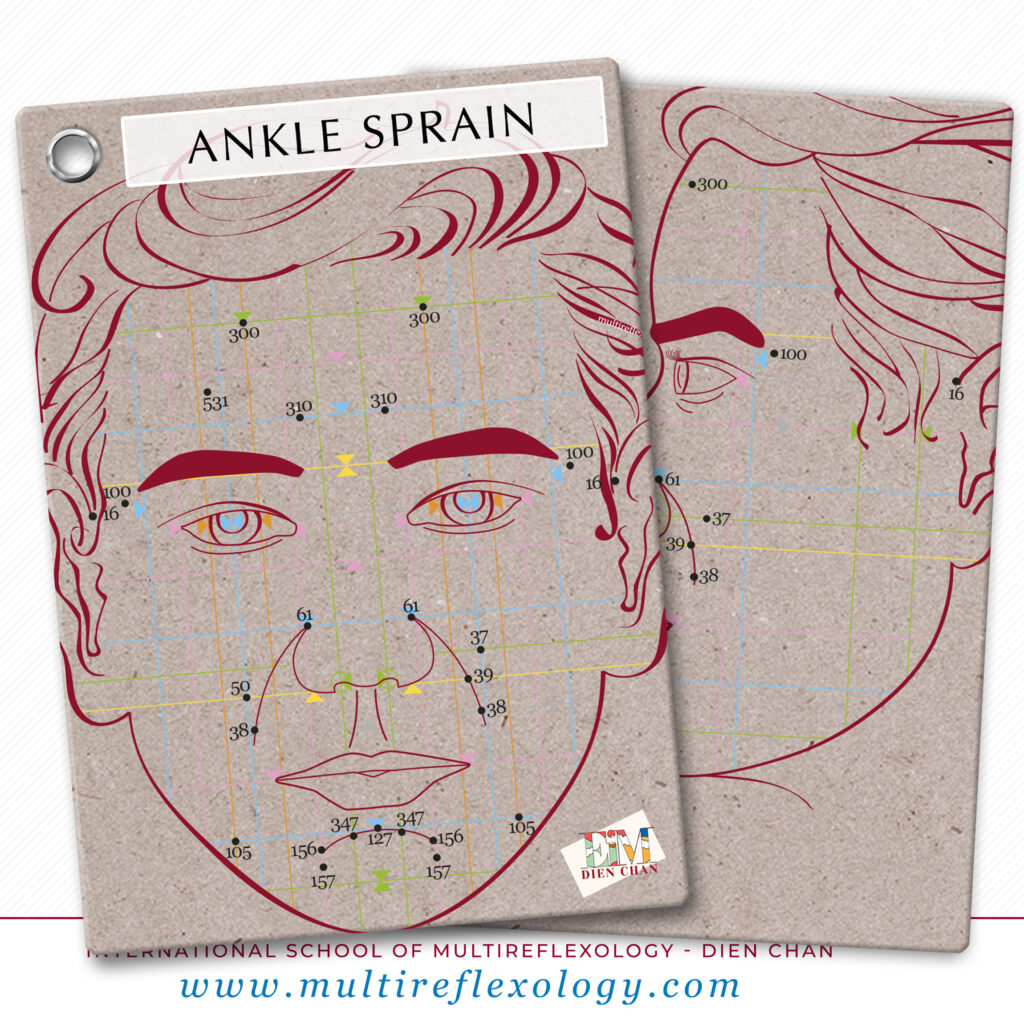
Using the multireflex detector nº101, test each of these bqc·points on the face. Retain only the points that “respond”—in other words, the most sensitive ones. Then stimulate each retained point for at least thirty seconds (or 30 percussions) using the same detector, or the little-hammer nº128 if the area is too sensitive.
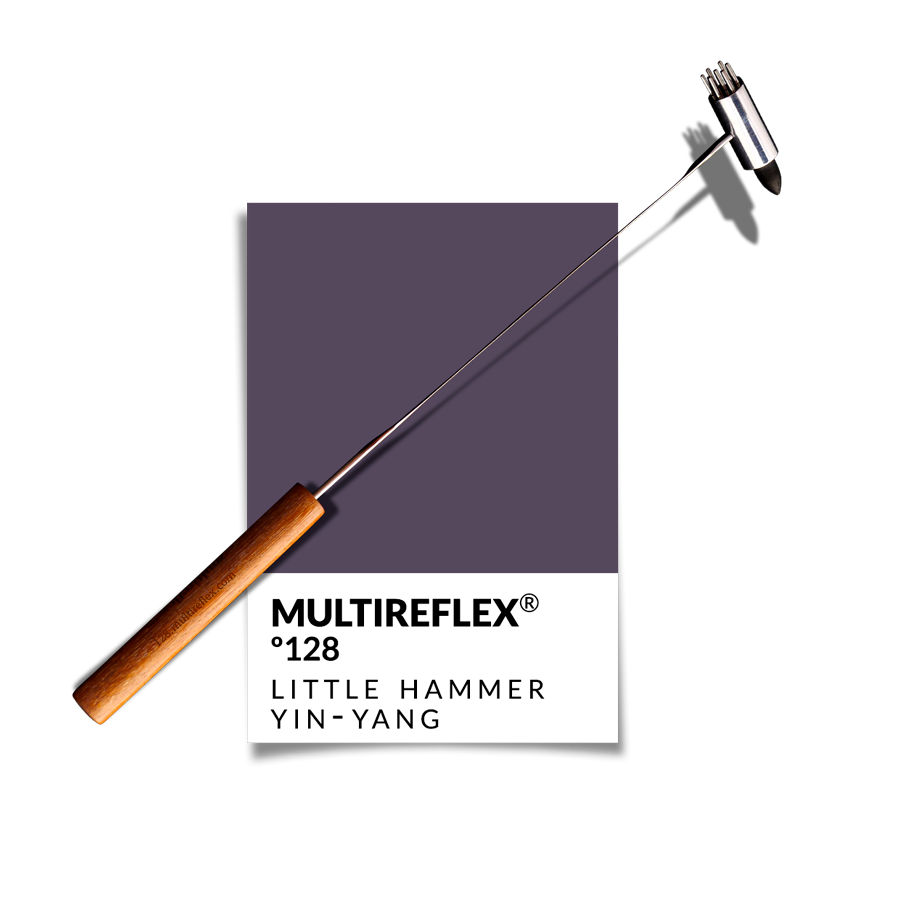
Consolidating and supporting balance
To prolong the treatment’s benefits, ideally apply small squares (approx. 1 cm per side) of heating patch to the reflex zones of the ankles on the face and leave them on overnight. This continuous action supports regeneration and relief.
Important recommendations
Practise this protocol at least once daily for a week. Consistency is key in Dien Chan. From the third day of treatment, once inflammation has subsided, it is highly recommended to ensure there is no osteopathic misalignment. This additional check ensures complete and lasting healing.
Dien Chan offers a holistic and effective approach for treating ankle sprains, focusing on the body’s innate ability to repair itself and regain balance.
To go further
- Get the complete moxibustion kit for optimal practice: https://dienshop.com/multireflex-kit.php?kit=516
- Related article: https://www.dienchan.academy/shoulder-dislocation
- Discover our articles dedicated to moxibustion and its benefits (in French): https://dienchan.blog/moxa-dien-chan
Learn authentic Dien Chan…
Your gateway to a complete therapeutic practice!
As you have just discovered, Dien Chan’s approach to treating an ankle sprain is a powerful example of this method’s depth and effectiveness. Beyond technical gestures, Dien Chan is a discipline grounded in a nuanced understanding of the body and its self-regulatory capacities.
If you are a natural health practitioner seeking to master the subtleties of Dien Chan and provide your clients with comprehensive, gentle, and personalised solutions, training is an essential step.
Learning authentic Dien Chan means acquiring the knowledge and skills to go beyond standard protocols, to create bespoke formulas for each person, and to truly understand the philosophy behind each gesture.
We invite you to consult the training schedule to enrich your practice and help guide your clients towards lasting wellbeing.
Join us in becoming creators of personalised treatments in authentic Dien Chan.
Training schedule and workshops — online or in person: training.Multireflexology.com
Sleep apnoea
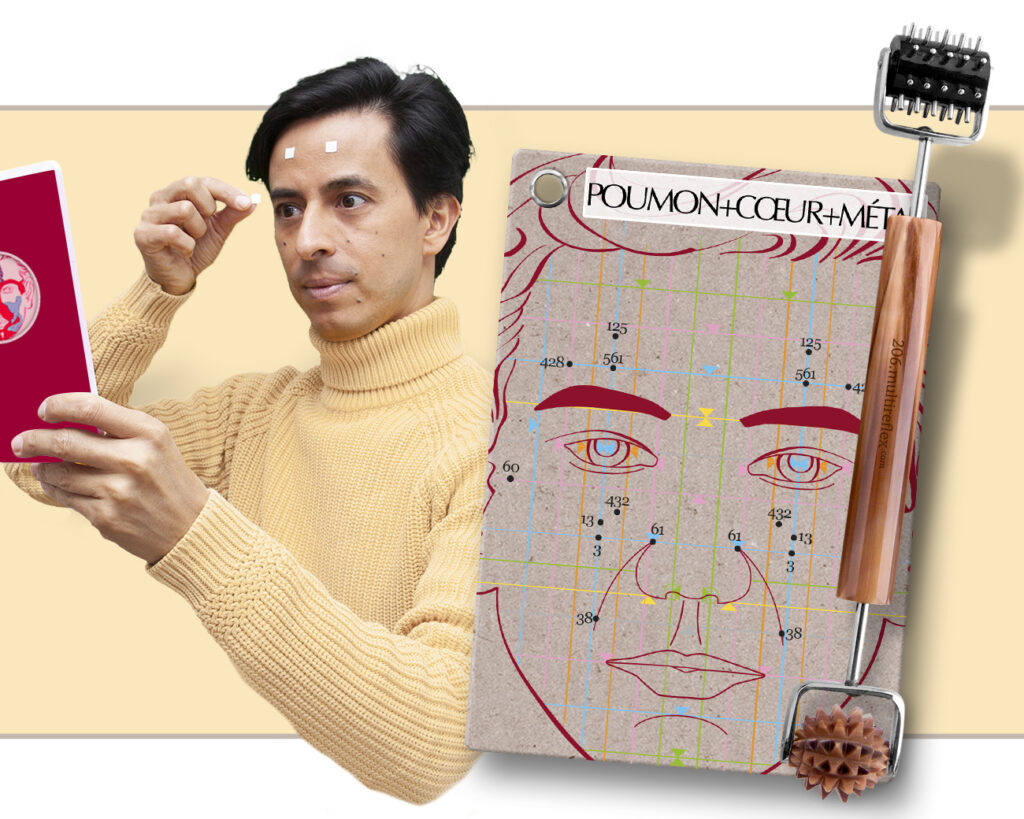
Sleep apnoea is not a disease, but a complex condition with various origins, involving numerous factors.
In this captivating video, we take advantage of the presence of experienced therapist Yvan Binggeli to delve deeply into the management of sleep apnoea.
Discover how to develop a detailed care plan based on innovative ideas to target the underlying causes of this disorder. This approach incorporates precise concepts to focus on the organs involved, while restoring the body’s biological and energetic balance.
This holistic method goes beyond conventional treatments by including body areas as well as facial reflex zones. It relies on the exclusive use of high-quality multireflex tools.
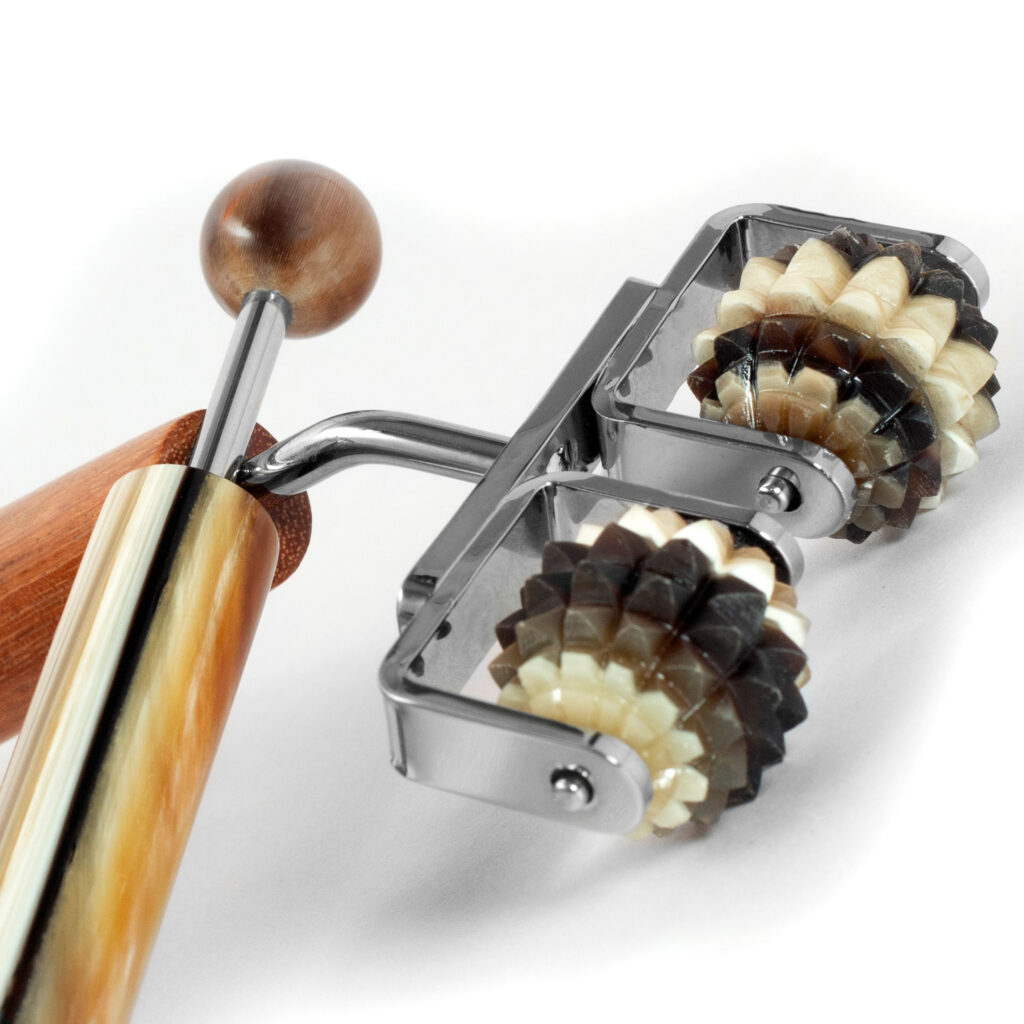
Indeed, we favour tools with wooden handles to avoid the disruptive static electricity generated by plastic. And we insist that parts in direct contact with the skin must be made of high-quality metal (for the yin effect) and natural horn (for the yang effect), as the latter is a noble material that respects the skin’s microbiota and has biological antiseptic properties.
This is the best way to work consciously and with the utmost respect for the skin.
We illustrate our approach with a real-life case
That of an ambulance worker who achieved very positive results thanks to Yvan Binggeli. Testimonials from other student therapists also support our approach, demonstrating the effectiveness of Dien Chan in many cases.
Given that sleep apnoea is a complex condition, we recognise that there is no one-size-fits-all solution. However, the art lies in creating personalised treatments. The video also explores the care of the Water element by stimulating bladder and kidney points·bqc, using the Faceasit app to help create constellations and personalised formulas.
Throughout the video, we review key concepts covering various aspects of the care plan:
- The patient’s general condition.
- Managing blood oxygenation and blood pressure.
- Dialogue and questioning to obtain essential information.
- Recommendations on multireflex tools.
Our goal is to support you in enriching your care protocols by integrating external knowledge, such as traditional Chinese medicine.
Throughout our training programme, delivered over several modules, we teach you how to translate the information obtained during your dialogue with the patient into concrete Dien Chan gestures.
To enhance your viewing experience, we recommend using the time-codes in the video description. They allow you to jump easily to each section with a single click.
During our discussion, we share many ideas to help you create a personalised care plan. Our aim is to inspire you to adapt your own approach.
Here is a list of ideas to try out:
1| To begin the care plan and address the general condition, we refer to the anti-stress protocol with the yin Rake nº416. The article is here › tools.dienchan.pro/en/stress
2| Body phase: Facing a rather yang disorder, we suggest a “Sleep apnoea” kit made up of the yin tools we discuss:
- The Double yin ball nº411 to work on the heart and lungs on the back.
- The Yin-yang roller nº206 to roll over the facial reflex zones of the lungs and heart, using the internal organs diagram as a guide.
- [For phase nº4 of our care plan] The Yin health ball nº433, to roll between the hands before going to bed. The palms are a reflex zone of the lungs, so this exercise promotes respiratory fluidity.
3| For the consolidation phase of treatment using point·bqc formulas, we provide several constellations. This term refers to groups of point·bqc we consider relevant to create a tailor-made Dien Chan formula.
You have various techniques at your disposal to create your own constellation and, after testing them with a detector, only the most reactive point·bqc will be selected to compose your fully personalised formula.
✔︎ Let’s take, for example, the case of the throat and the flexibility of the soft palate, a crucial aspect in preventing the collapse of this “flap” during sleep, which can obstruct the airways and cause sleep apnoea episodes. To treat this, we propose a constellation involving the following point·bqc: 14· 274· 275· 64· 71· 8· 20· 109· 106·.

✔︎ To strengthen the elasticity of the soft palate, we add the pair of bqc·points 16· 61·, which helps to make the internal structures of the body more flexible.
At the end of the treatment, an ideal practice is to apply heating patches to the bqc·points that reacted the most (i.e. the most sensitive), to ensure a gentle but prolonged effect.
✔︎ It is also interesting to test bqc·points related to the heart and lungs to promote oxygenation and blood circulation, such as: 38· 3· 13· 61· 432· 428· 561· 125· 60·.

✔︎ We will also stimulate bqc·points related to the Bladder meridian in order to release existing energy blockages in the neck: 87· 293· 156· 85· 21· 65· 191·
Once again, only retain the most sensitive bqc·points from this constellation.

These proposals are only starting points and it is simpler to create your own constellation using the Faceasit application. This will allow you to select the most sensitive points that will ultimately make up your personalised formula.
Consult the numerous videos showing how to use the Dien Chan app called Faceasit to fully understand how to structure a perfectly individualised formula.
4| The prescription:
Treatment often involves exercises that the patient can do at home, including the use of the Yin-yang roller nº206 to work on the reflex zones of the lungs and heart, according to the internal organs reflex diagram.
Also recommend that the person roll the Yang ball nº433 between their hands before going to sleep. The palms of the hands are reflex zones of the respiratory system. By stimulating them in a yin manner, we help to prevent the drying out of the lungs while promoting the circulation of flows.
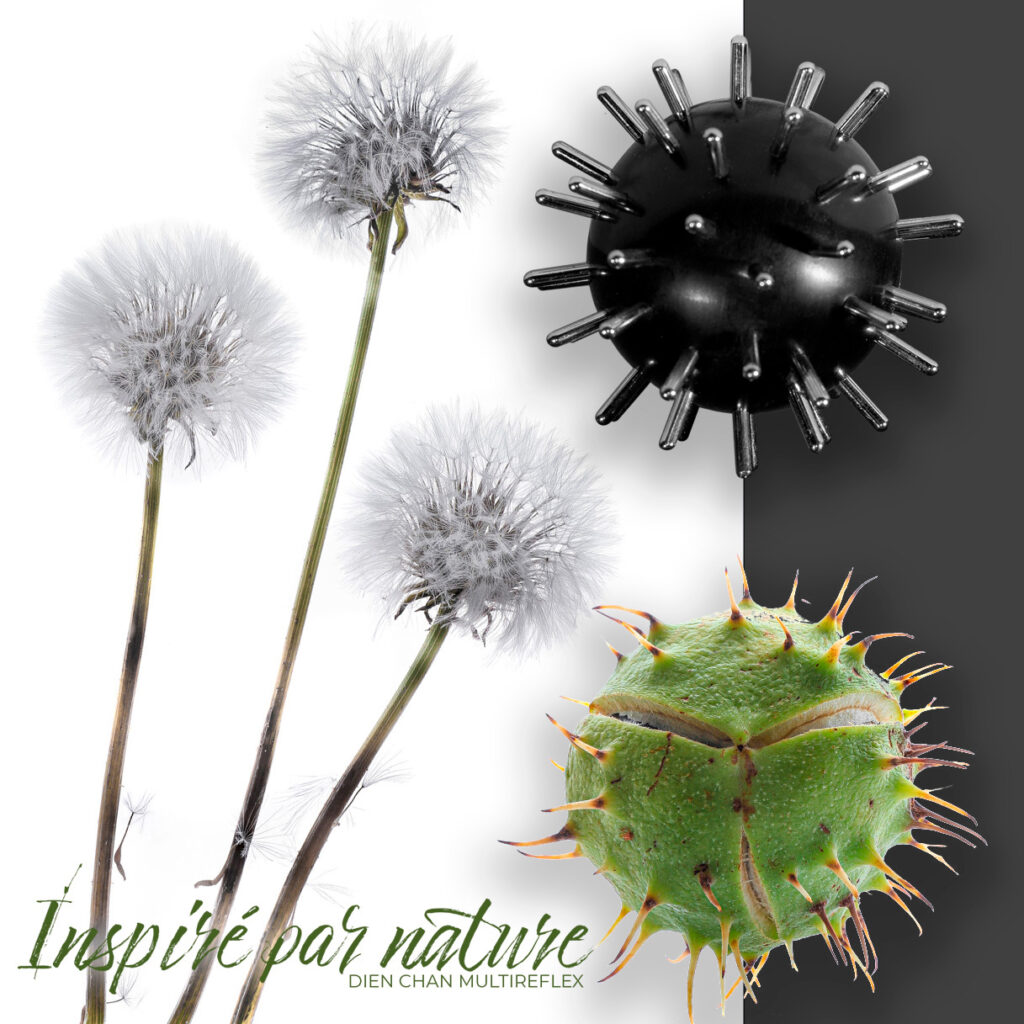
If the person is determined to treat their problem, you can teach them how to use heating patches at bedtime (reference nº644 in the DienShop.com). It is generally recommended to apply them to the reflex zones of the throat (according to Penfield’s diagram) and on the upper part of the lungs above the eyebrows, based on the reflex diagram of the internal organs.
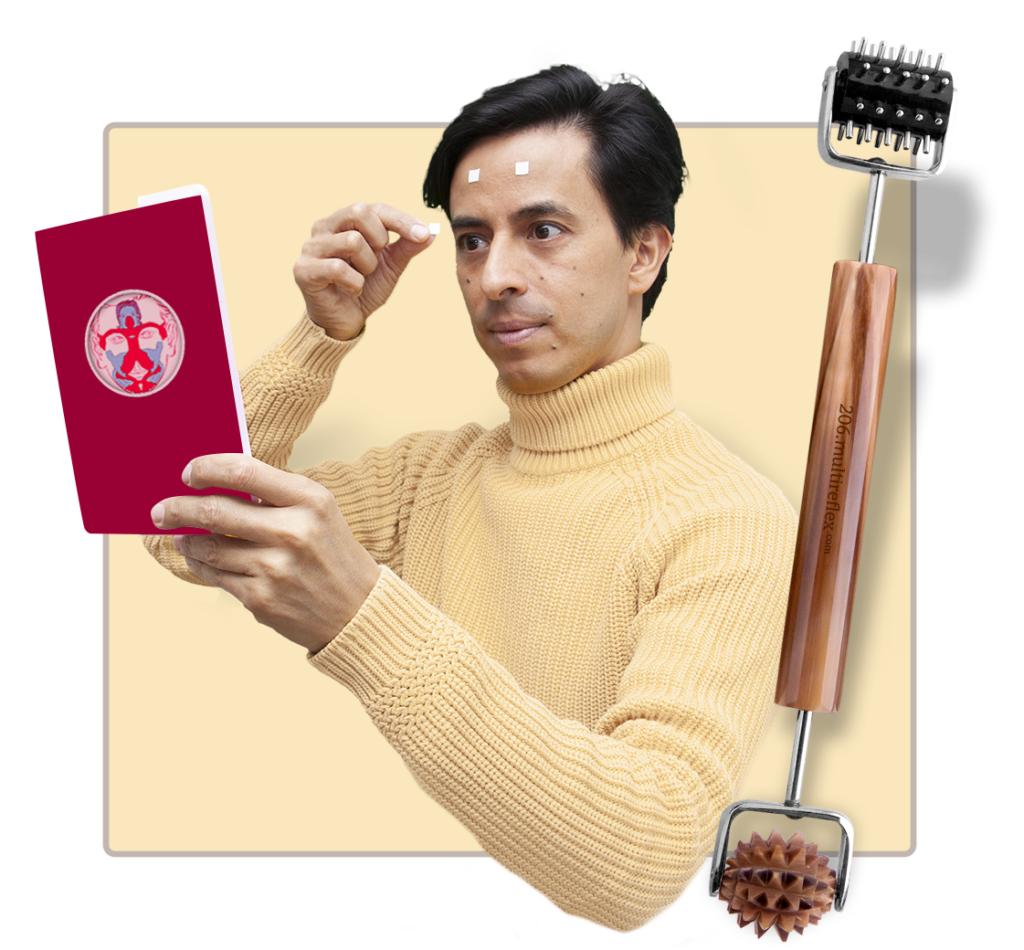
However, it is essential to avoid applying heating patches to the areas corresponding to the bqc·points 3· and 13· (related to the lungs), as the menthol emanations could irritate the eyes.
The International School of Multireflexology – Dien Chan (ISMDC) is committed to supporting you on your journey towards creating personalised care. Our videos and the articles on the DienChan.blog are designed to build your self-confidence.
Don’t forget to subscribe to the www.DienChan.tv channel to continue benefiting from the advice of Dien Chan experts.
Yours in Dien Chan,
— The Dien Chan Experts —
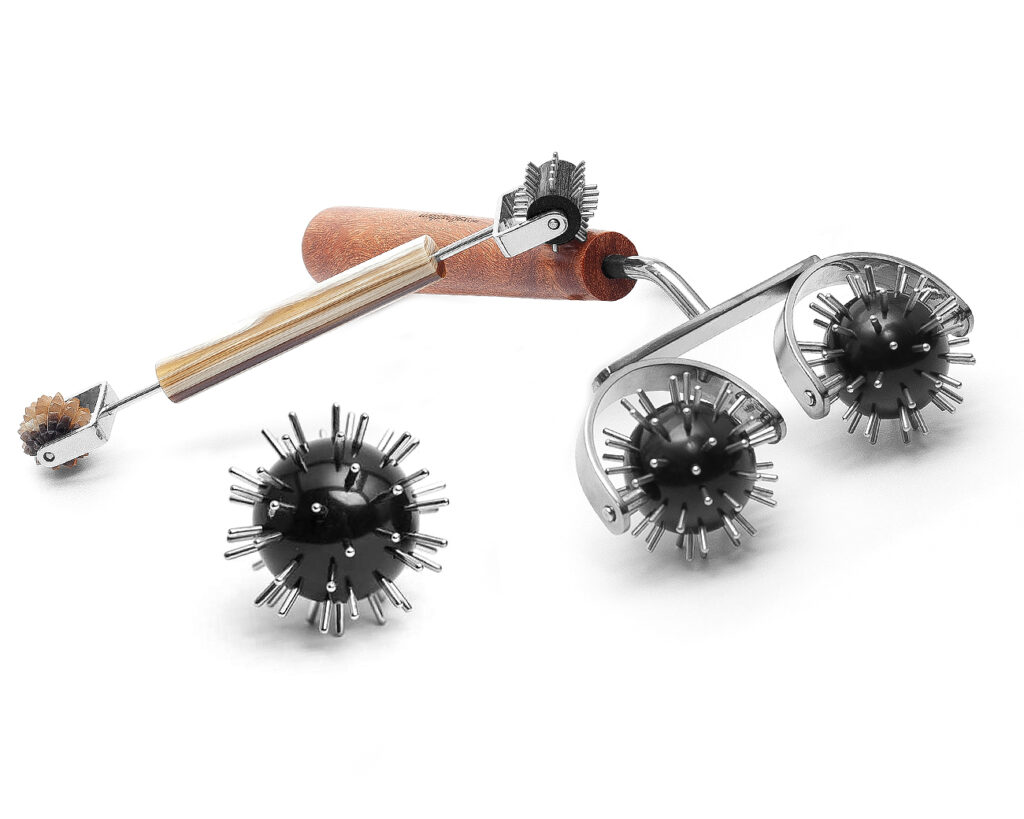
Taking care of your intestines means pampering your brain!
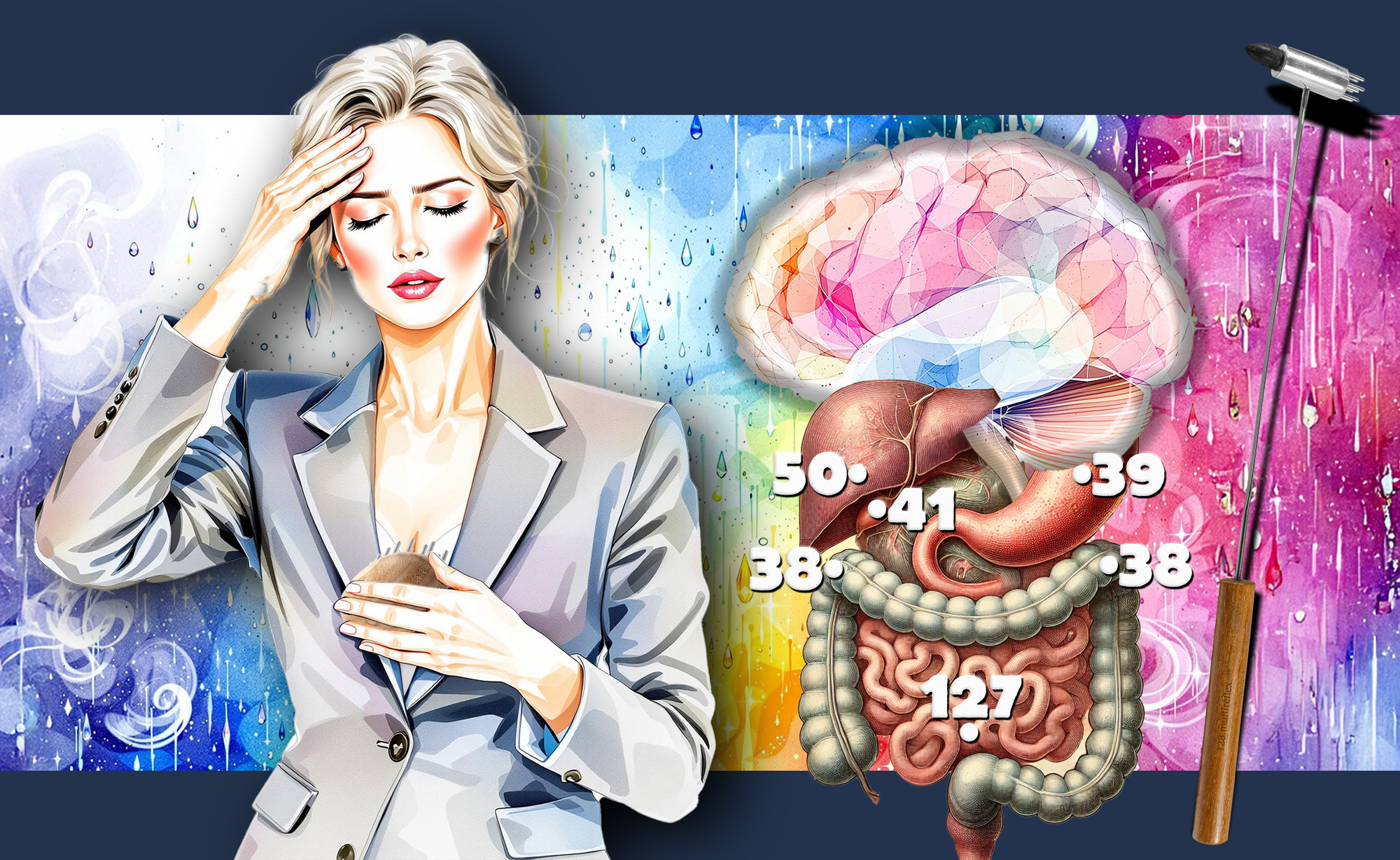
Did you know that our digestive system is often considered our second brain? The enteric nervous system, nestled in our gut, is composed of nearly 100 million neurons, sharing a common origin with those of our brain. This close link explains why our emotions influence our digestion… and vice versa! Stress, anxiety, joy, or exhaustion all leave an imprint on our intestinal transit. With the arrival of spring, it is not uncommon to feel a certain fatigue, bloating after eating fruit, or even a slight seasonal depression.
As the famous humorist Coluche said, «This guy is not well in the head’s intestine!»; an expression that, in its own way, perfectly illustrates the interconnection between our intestines and our mental state.
Beyond digestion, our gut plays a key role in our overall health; it houses nearly 75% of the body’s immune cells. It is a true regulation centre that influences both our resistance to infections and our emotional balance.
The large intestine is not only the seat of our immune system, but it is also closely related to our brain, and chronic irritation can promote neurodegenerative diseases like Alzheimer’s or Parkinson’s, due to the release of inflammatory molecules that weaken the brain.
In addition to serotonin, the intestine influences the production of dopamine, a neurotransmitter crucial for motivation and pleasure. Poor intestinal health can thus affect our mental energy and decision-making capacity.
This constant communication between the brain and the intestines is called the brain-gut axis (or gut-brain axis). This ongoing dialogue impacts both our digestive health and our mental well-being. It is therefore essential to support this balance, particularly by taking care of our intestinal flora and promoting good transit.
Rather than systematically resorting to powders or pills, why not learn to regulate our digestion naturally? Stimulation of the intestines through reflexology, adapted diet, self-massages… So many gentle and effective approaches to regain energy and lightness in daily life!
Care plan for a gut~brain axis in top form
To obtain optimal and lasting results, we will apply the Dien Chan care plan with rigour and attention. Dien Chan is not just about stimulating bqc·points; it is a holistic approach that considers the person’s overall state.
- Before using the reflex diagrams, we must work on the body to facilitate overall balance. This step is crucial to maximise the effectiveness of the care and promote a harmonious response.
- Once the terrain is prepared, the bqc·points formula will reinforce and anchor the benefits of the initial steps.
Thanks to this holistic and progressive approach, each session becomes a tailored experience, perfectly adapted to the person’s needs. A method that guarantees deep, lasting results and overall well-being!
1| Mental preparation
The brain exerts a direct influence on the functioning of the intestines through the autonomic nervous system and the endocrine system. Chronic stress can disrupt digestive balance and lead to issues such as irritable bowel syndrome, bloating, abdominal pain, or even an imbalance in the intestinal flora.
To soothe the gut-brain axis, it is essential to start by relaxing the nervous system. A simple and effective gesture is to gently rake the scalp using the Yin rake nº416. Perform regular movements from the forehead to the nape without excessive pressure. Repeat these back-and-forth movements about fifty times, then do the same on the sides of the skull.

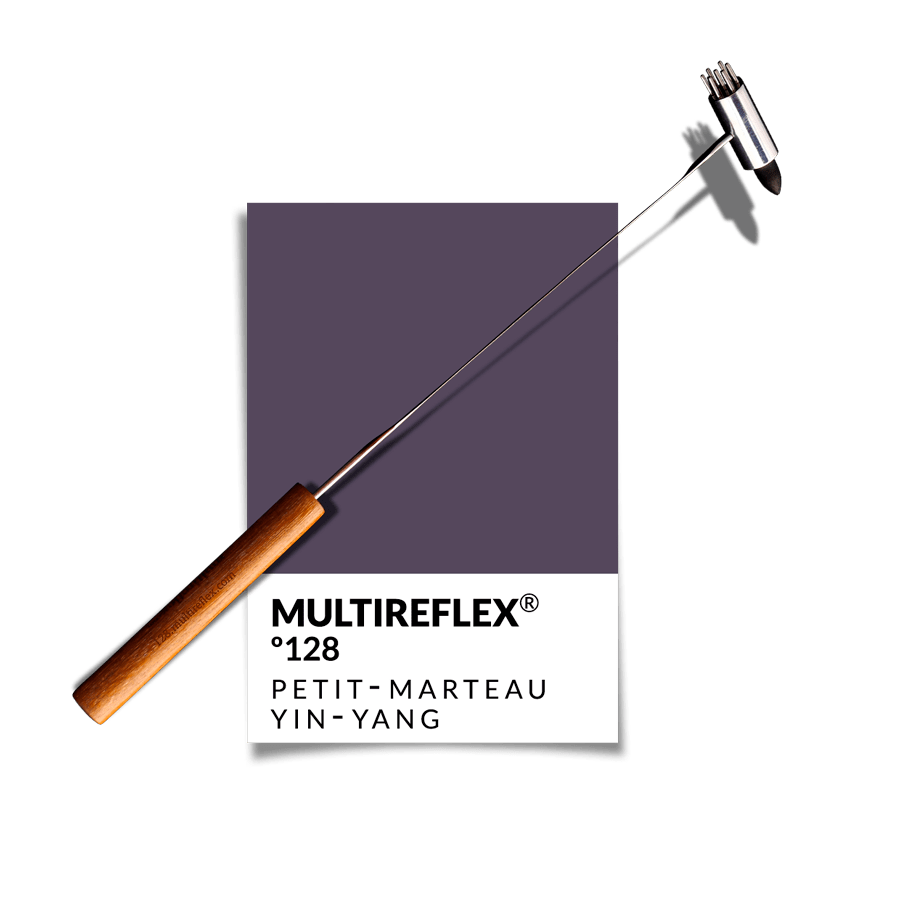
If the person expresses feelings of stress, complement this first step by gently tapping bqc·points 124· and 34· with the Little-hammer nº128. About thirty percussions are enough to promote relaxation and prepare the body for the following care steps.
2| The body step

If possible, revitalise the microcirculation of the abdomen by rolling over it with the Double yang ball nº410. About thirty back-and-forth movements on each side of the abdomen help to warm up the area, thus encouraging better blood and energy circulation.
Ensure the sensation remains pleasant for the person and take the opportunity to engage in dialogue. This moment of exchange is precious for obtaining more information about the troubles that may sometimes bother them.
By creating an environment of trust, you will better understand their needs and adapt the care accordingly, thus reinforcing the effectiveness of the treatment.
3| The reflex step
Let’s start by alerting our brain that we need to focus on the abdomen. To do this, perform a massage around the mouth. The most appropriate would be to perform the Reflexodrainage, then repeat the mouth massage once more.
Next, let’s focus on the main reflex zones:
- The stomach: stimulate the area located to the left of the nasal wing using the mini-brush of the Beauty-brush nº252. Gently knead the skin with comma-like movements for one minute. This technique helps to restart gastric activity and improve digestion without irritating the skin.
- The liver: now move to the right side, still using the mini-brush, to activate the hepatic system. This gentle kneading promotes blood circulation to the liver, an organ essential for filtering and detoxifying the blood.
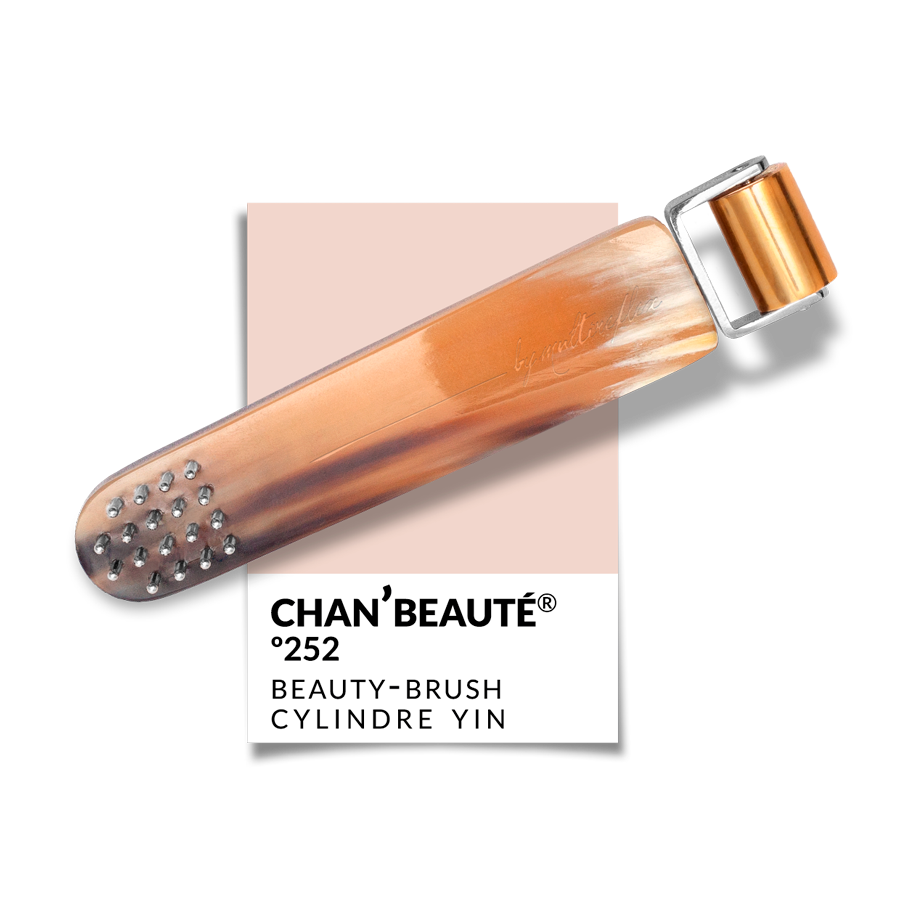
Thanks to the prior Reflexdrainage, fluids circulate better, and the following stimulations gain in effectiveness.
It is important to note that intestinal bacteria produce neurotransmitters such as serotonin, about 90% of which is manufactured in the intestine. Serotonin plays a key role in regulating mood, sleep, and anxiety. A microbiota imbalance (dysbiosis) is often associated with disorders such as depression or anxiety.
Finally, let’s explore the representation of the head on the reflex diagrams. By observing the diagram of M. Yang (red man of the reflex diagram of the extremities on the face), we can refine the work by targeting specific zones to rebalance the brain-gut axis.
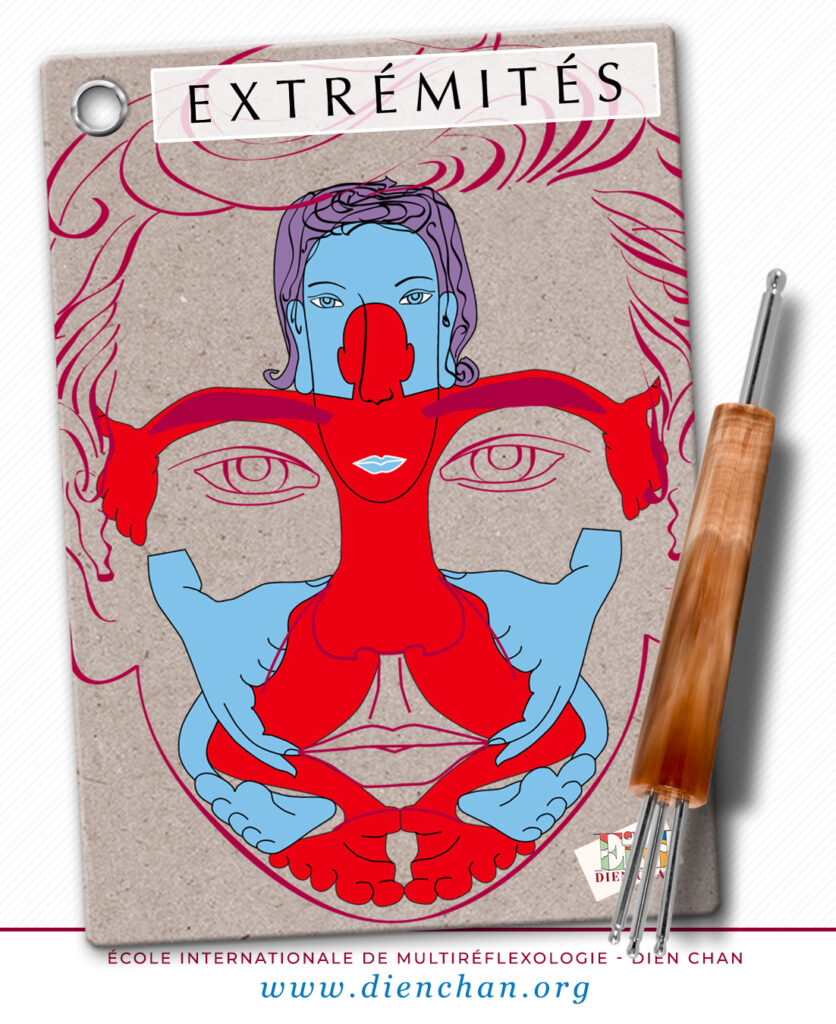
This approach allows us to precisely target the areas to be treated to achieve lasting results and improve your quality of life.
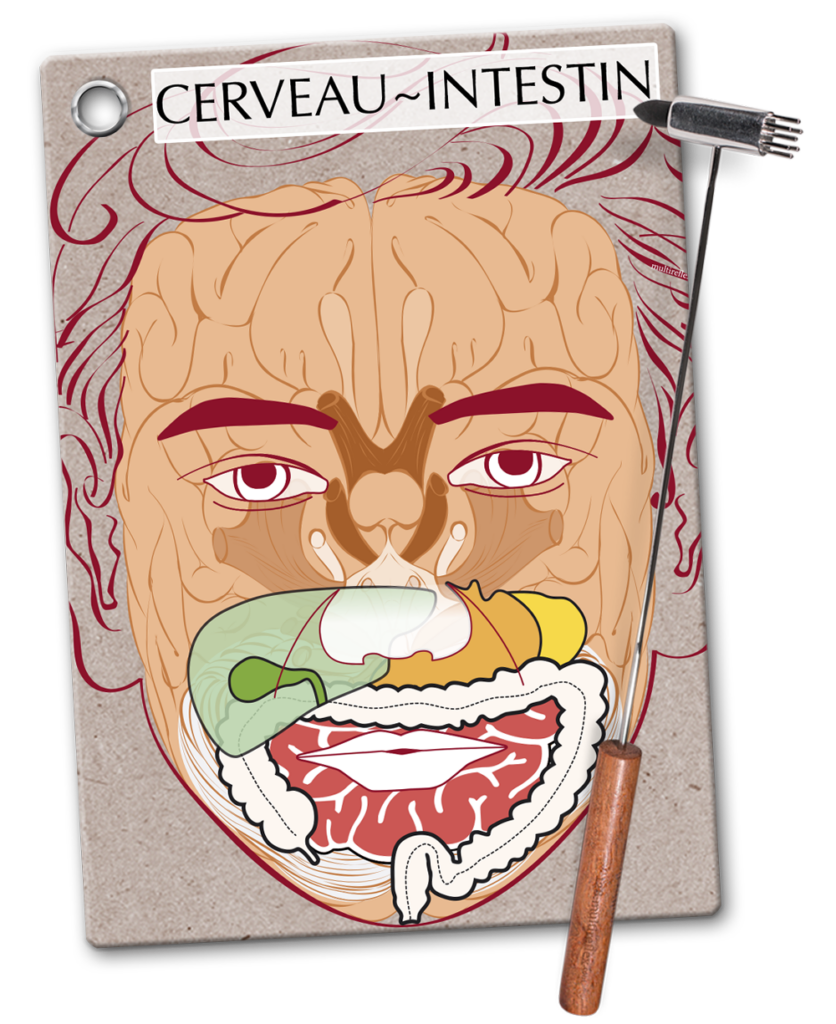
4| Consolidation step
Take advantage of the Reflexdrainage massage to identify painful points along the intestinal path around the mouth. This helps to pinpoint parts of the intestine that are less active or suffering from blockages.
It is therefore interesting to monitor the sweeps we perform during the previous steps to detect the most sensitive areas. We can then return to them during this consolidation step.
We will thus build a constellation from which we select the most sensitive bqc·points.
For example, if bqc·points 38· or 342· 104· or 511· are particularly sensitive, stimulate them for thirty seconds on each side using the Detector nº101. This point, located at the intersection of the horizontal line dividing the upper lip with the nasolabial fold, indicates the elbows of the large intestine.
The vagus nerve, the main communication channel between the brain and the intestines, quickly transmits information about the state of the digestive tract. bqc·point 113·, related to this nerve, must be included in our constellation.
We also resume the stimulation of the liver and gallbladder with bqc·points 50· and 41· to revitalise blood flow. To consolidate this approach, we complement it with bqc·points 60· and 57·, related to the heart.
- The Liver meridian, when imbalanced, can lead to stress, anxiety, and digestive disorders such as irritable bowel syndrome.
- The Stomach meridian, which directly connects the digestive system to the head, influences digestion and nutrient absorption, essential for proper brain function. We therefore add bqc·points 255· and 39· to our constellation.
- We should also test bqc·point 37· (the spleen), which plays an important role in managing thoughts and mental rumination. An imbalance in the spleen’s energy can lead to digestive and mental stagnation.
- It would also be wise to test the bqc·points regulating the energy of the small intestine, as its imbalance can cause confusion, indecision, and digestive disorders: 127· 348· 222·.
- To go further, let’s test the Governor Vessel (Du Mai) meridian, which directly influences the brain and central nervous system: 1· 189· 188·.
Once your constellation is built, test the most relevant bqc·points using dialogue with your consultant. With the Faceasit application, you can quickly access the data sheets for each bqc·point to verify their relationships.
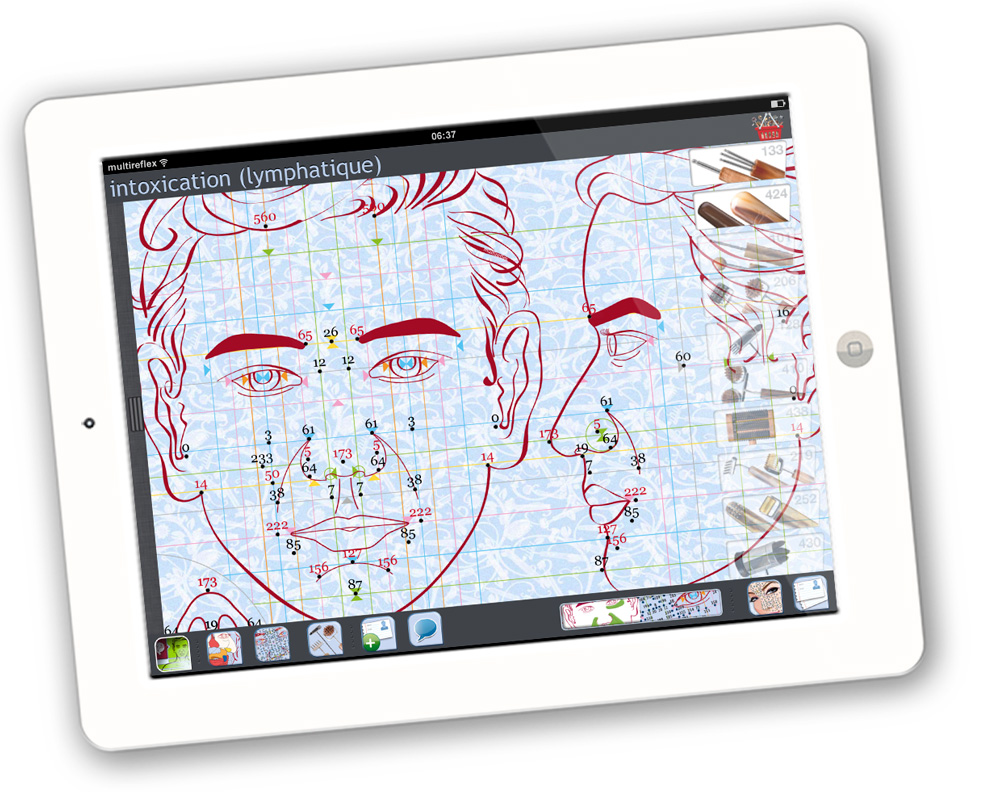
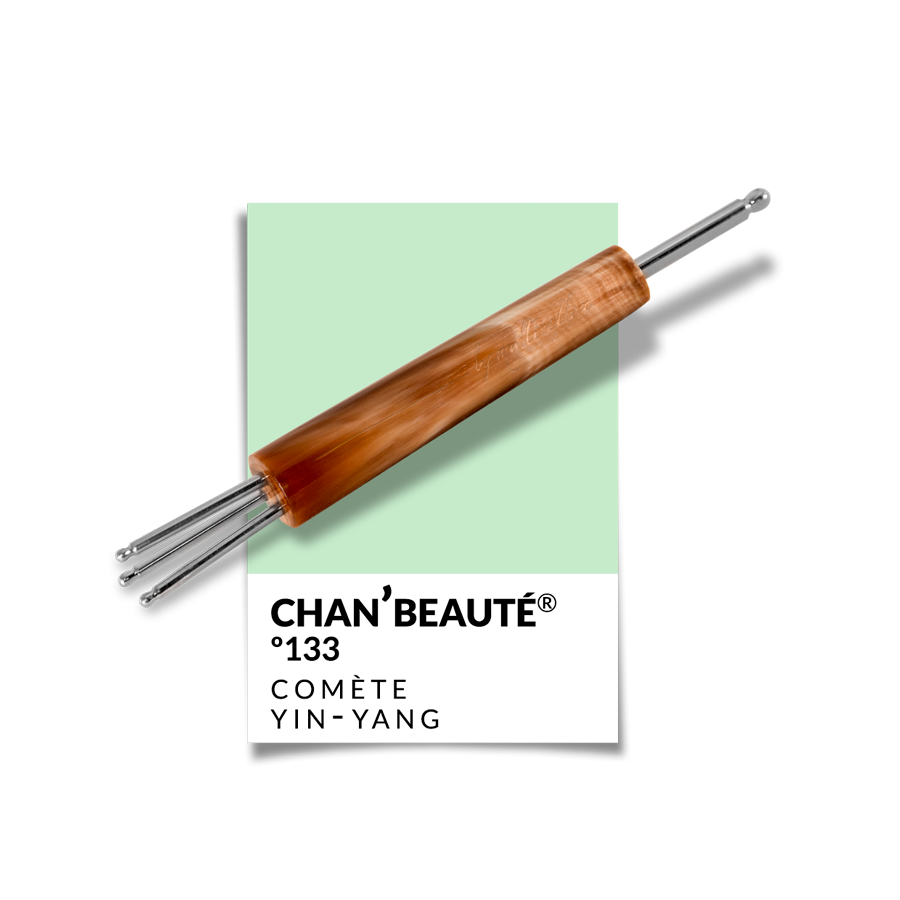
Use the Detector nº101 (or the large detector of the Comète nº133 for sensitive skin) to test the points in your constellation and retain only the most sensitive ones. Then stimulate each selected point with the Detector or the Little-hammer nº128.
- Pregnant women: avoid bqc·points under the nose and replace the mouth massage with a forehead massage.
- Excess heat: if bqc·point 127· is not painful, test bqc·point 143· under the nose. If the latter is very sensitive, use the copper cylinder of the Beauty-brush nº252 along the nasolabial fold to cool the intestine.
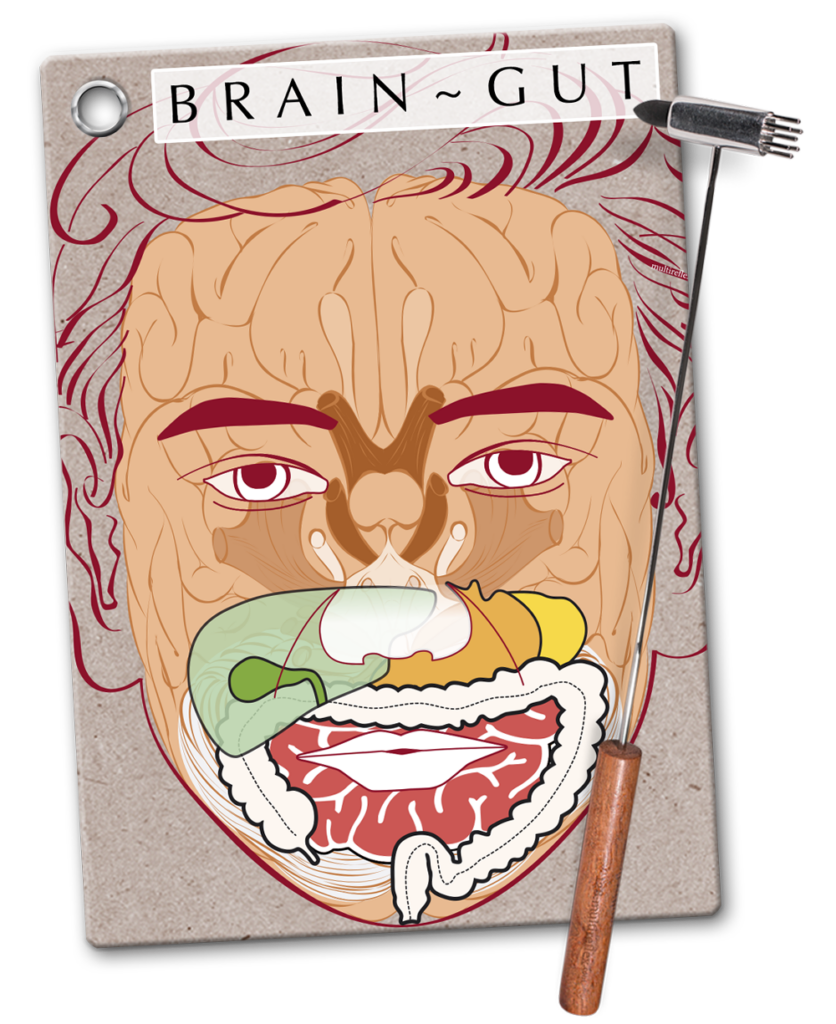
5| Dosage and advice
To maximise the benefits of Dien Chan sessions, it is essential that your patient can continue the care at home. Here’s how to proceed:
If you have noticed an improvement during the body or facial reflex step, recommend the most appropriate multireflex tool. For example, the Double yang ball nº410 for microcirculation, or the Beauty-brush nº252 for more targeted stimulations.
- Show your patient how to use the tool practically and gently. Explain the movements to perform, such as back-and-forth or kneading, emphasising gentleness and precision.
- Ask your patient to repeat the massage every day for at least a week. Regularity is essential to achieve lasting results.
- During this period, it is crucial to avoid stress, anti-inflammatories, and antibiotics, as they can degrade the intestinal flora and reduce the effectiveness of the care.
- Encourage your patient to note their feelings and progress. You can then adjust the advice and exercises during the following sessions according to their evolution.
By following these recommendations, your patient will not only prolong the benefits of the sessions but also strengthen their autonomy in managing their well-being.
Conclusion
What we eat directly impacts our brain. A diet rich in fibre, omega-3s, and polyphenols, found in fruits and vegetables, promotes a balanced microbiota and enhances cognitive and emotional functions. Conversely, a diet high in ultra-processed foods and refined sugars can disrupt the brain-gut axis, favouring anxiety or depression.
Taking care of your intestines means taking care of your overall well-being. By integrating these simple and natural practices into your daily life, you can improve your digestion, strengthen your immunity, and regain vibrant vitality.
In summary, the intestines and the brain function as a true duo. Taking care of your digestive system means taking care of your mental health, and vice versa!
Want to learn more? Take advantage of our workshops and training, both online and in-person, and join the joyful team of the ISMDC.
Train in Dien Chan with authentic experts and transform your life and that of your loved ones!
Phantom pains: invisible reality, but very present
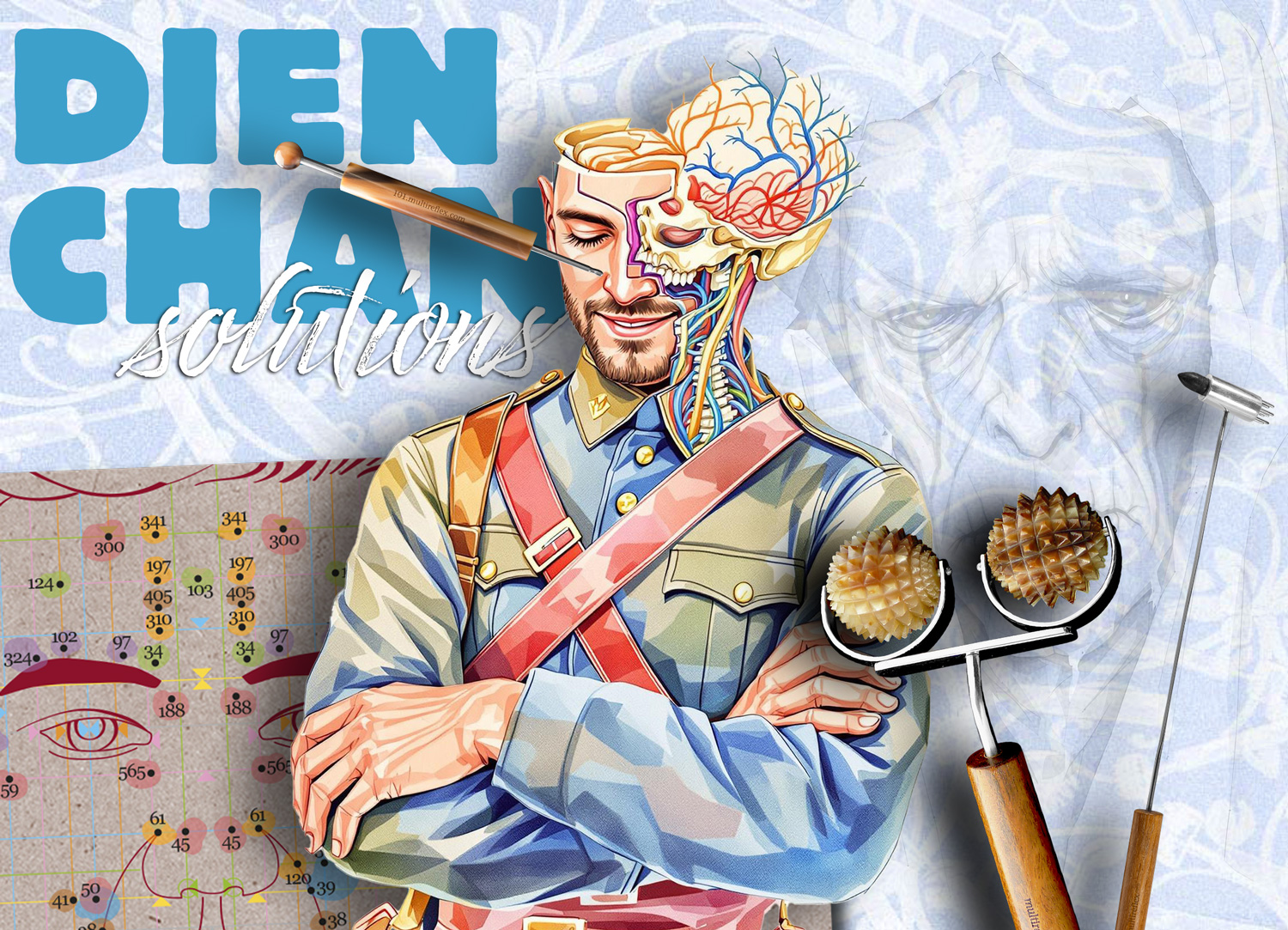
En français ici | En español aquí
Imagine feeling a sharp pain, a pinch or tingling in a part of your body… that no longer exists.
This troubling experience, known as phantom pains, is a reality for many people who have undergone amputation or the removal of an organ. This phenomenon deeply affects the quality of life of those who suffer from it, disrupting their daily lives and well-being.
Phantom pains are more common than one might think, affecting up to 80% of amputees. They manifest as persistent painful sensations, as if the missing limb or organ were still present. They can vary in intensity and nature, ranging from simple tingling to unbearable stabs.
- But why does the brain continue to send pain signals when the limb has disappeared?
- And above all, how can we act to alleviate this suffering without resorting solely to medication?
These pains are caused by nerve signals that continue to be sent to the brain, as if the limb were still present. The exact mechanisms are not entirely understood, but they are thought to involve changes in the central and peripheral nervous systems.
Thanks to Dien Chan, it is possible to gradually re-educate the nervous system and alleviate these pains by stimulating strategic areas of the face and body.
In this article, we guide you through a five-step approach, designed to help people suffering from phantom pains to find comfort and better reconnect their brain to their real body.
The neurological basis of phantom pains
Phantom pains describe a fascinating phenomenon that highlights the complexity of the nervous system. When a limb or organ is amputated, the nerve connections that transmitted sensations to the brain do not entirely disappear. The brain retains a “body map,” called the sensory homunculus, which mentally represents the entire body, even in the absence of a physical part. This is why some people continue to feel sensations, sometimes painful, in a limb that no longer exists.
It is interesting to note that Professor Bùi Quôc Châu treated many Vietnam War veterans suffering from phantom pains in their extremities; a sad testament to this devastating conflict.
He was able to draw on this experience to confirm his theory that, in Dien Chan, we address the brain. There is no direct link between a fixed point on the face or a reflex zone worked on and the affected part of the body. In reality, we indicate to the brain to take into account the affected area.
In terms of traditional Chinese medicine (MTC), we redirect the Qi (vital energy) towards the suffering organ or limb.
Noting that a reflex diagram of Dien Chan can relieve phantom pain is very encouraging and confirms the precise connection between the facial area worked on, its cerebral representation and its real physical target. These experiences also highlight the importance of choosing the right yin or yang effect to apply, as not all phantom pains manifest in the same way. Some are dull and deep (yin), while others are sharp, hot or precise (yang). This invites us to select a multireflex tool with the opposite effect to restore balance, because pain, pathology and unpleasant sensation are always caused by an imbalance.
The importance of a progressive approach
The success of the care relies on a methodical progression
1| Begin with gentle stimulations to accustom the nervous system.
2| Favour precision over force, especially for the stimulation of bqc·points with the multireflex detector nº101.
3| Train with experts to master the technique of detecting and activating points (see training training.multireflexology.com).
Dien Chan care plan for phantom pains
The objective of the care is to re-educate the nervous system by providing it with new sensory information to reduce pains. This protocol takes place in five progressive steps.
1 | Soothe the nervous system
This first step is essential to prepare the brain to receive therapeutic stimulations. A soothed nervous system improves receptivity to subsequent care.
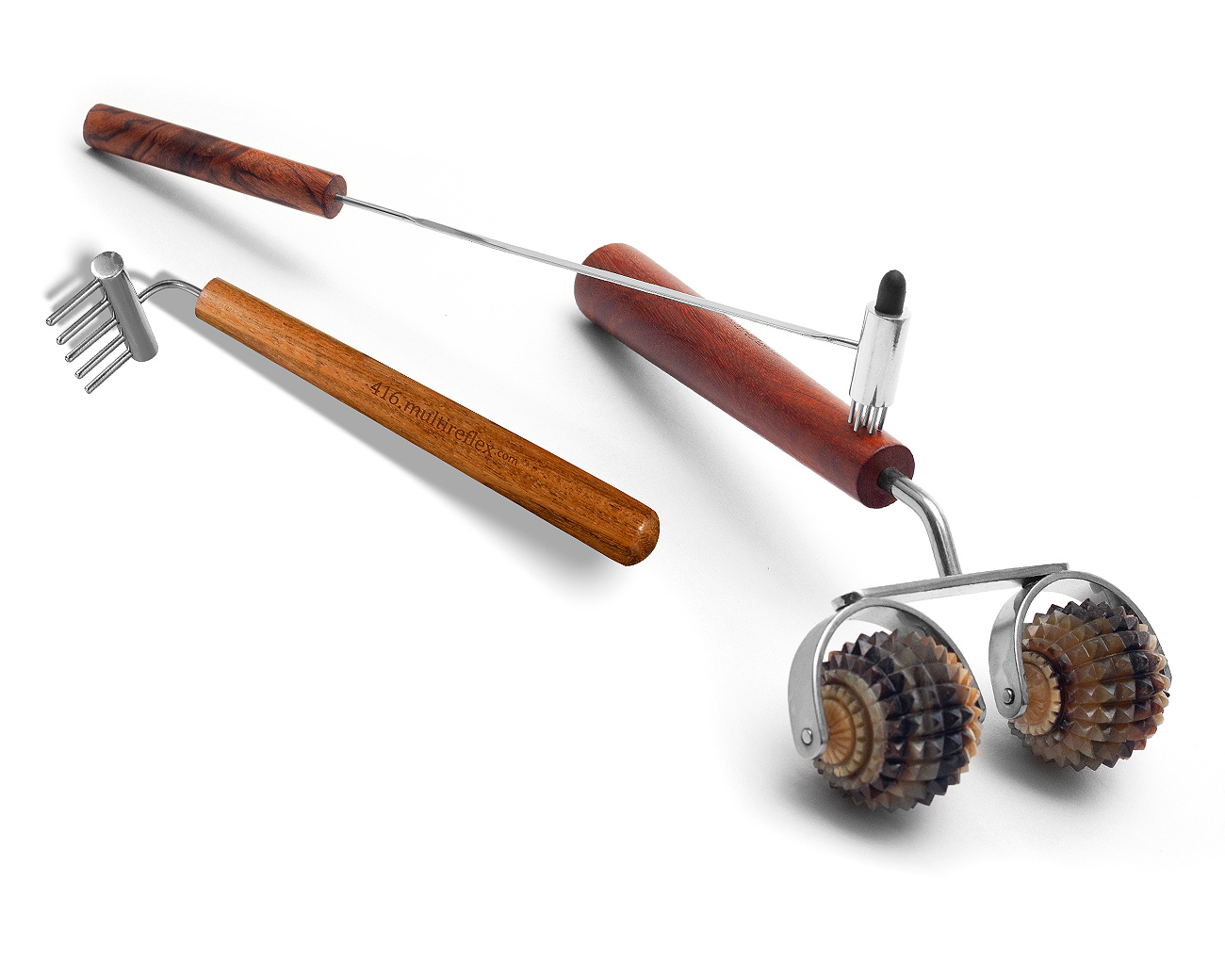
- Stimulation of the reflex zones of the autonomic nervous system with the Yin rake nº416
- Gently rake the scalp from the forehead to the nape about fifty times.
- Repeat the movement on the sides of the skull, from the temples to the nape.
The gestures should be slow and supple to induce a state of deep relaxation. [cf: Stress treatment]
2 | Reactivate body awareness
By working on the opposite limb or on a symmetrical area, we exploit the principle of contralateral connections of the brain.
- Stimulation of the opposite limb (e.g. right arm if the amputation is on the left) with the Double yang ball nº410.
- Work on symmetrical body areas (e.g. arm/leg, knee/elbow).
Perform about fifty gentle back-and-forth movements to strengthen the connection to the body schema.
3 | Stimulation of the reflex zones of the face
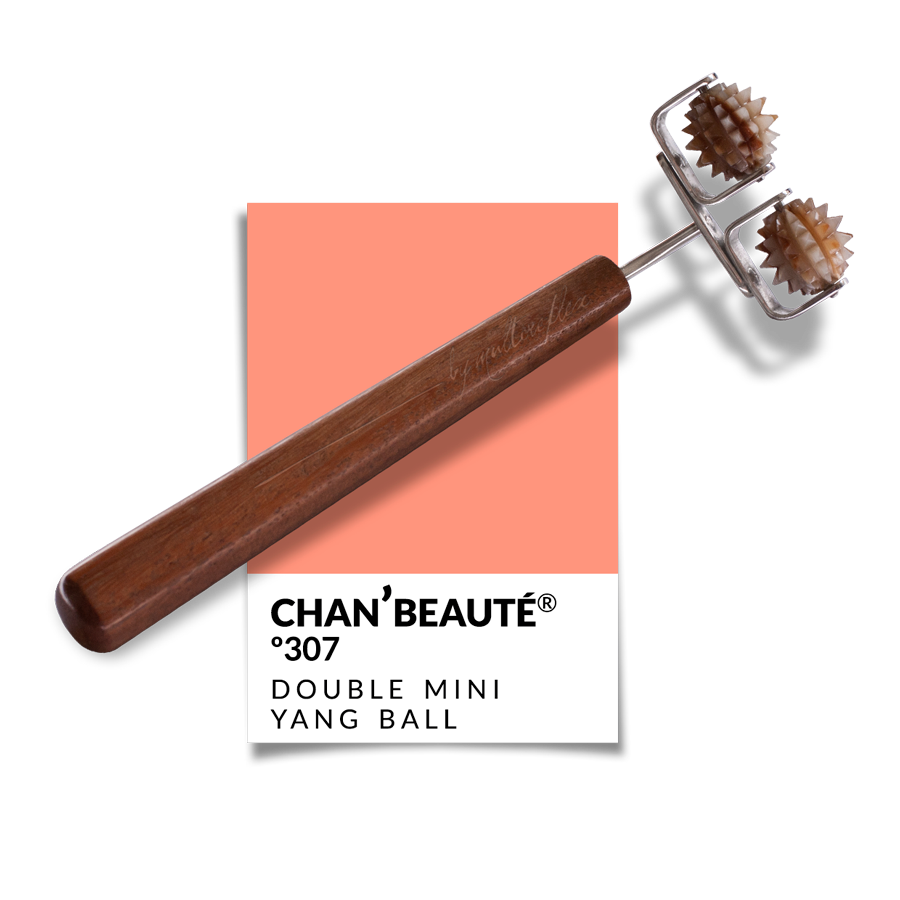
The face, being richly innervated, serves as a dashboard to act on the whole body.
- Identify the most reactive reflex zones by choosing an appropriate reflex diagram.
- Work on sensitive areas with a precise tool such as the Double mini yang ball nº307.
Perform about fifty gentle back-and-forth movements on each recognised area.
4 | Consolidate the care with bqc·points
The application of a Dien Chan formula reinforces the benefits of the previous steps.
The selection and stimulation of bqc·points are essential steps, which require appropriate training. The technique is essential and influences the results directly, hence the importance of precision in the gesture.
Begin by identifying the points corresponding to the amputated limb using the Faceasit application. This initial mapping provides a valuable basis for structuring the care. Then, enrich this selection by integrating points that stimulate cerebral circulation. This optimises the body’s response and maximises the effectiveness of the treatment.
Once the points are located, test them one by one to evaluate their sensitivity. Contrary to what one might think, the reactivity of a bqc·point does not depend on the force exerted, but on the precision of the gesture and the angle of approach. It is a subtle technique that requires training and in-depth training.
Only the most responsive bqc·points will be retained to compose a tailor-made formula. This targeted approach guarantees infallible and adapted stimulation to the needs of the individual being treated. By mastering this methodology, the practitioner becomes a true architect of care, capable of designing personalised and efficient protocols.
These subtleties highlight the importance of rigorous teaching. This is why it is recommended to follow a course or workshops with recognised experts (training.multireflexology.com). Sharing skills and learning under supervision allows you to acquire the technical precision necessary and a deep understanding of the principles underlying the efficiency of the method.
This is how an experienced Dien Chan practitioner becomes the architect of their protocols, designing tailor-made care for each patient.
For those who do not yet have the chance to use the incredible app Faceasit (you can consult the usage videos here: videos.Faceasit.com), here is a suggestion of a constellation of bqc·points to test to compose your own personalised formula.
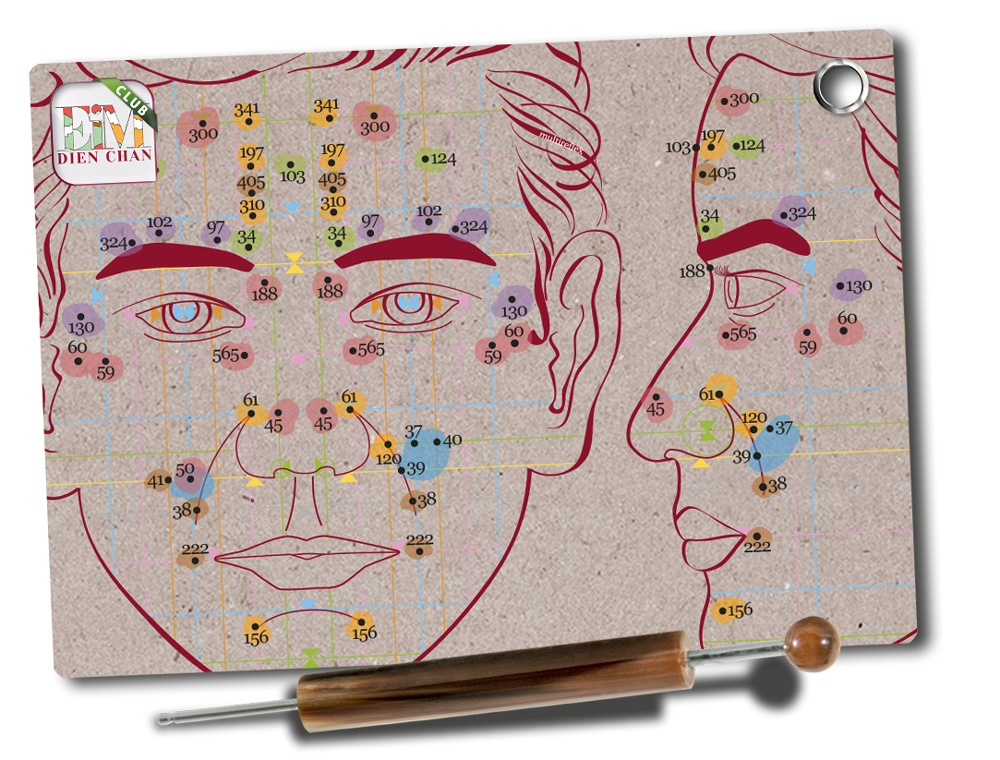
- Calm the nervous system [green zones]: 124· 34· 103·
- Cerebral irrigation [red zones]: 300· 59· 45· 50· 60· 188· 565·
- Arms and forearms [purple zones]: 324· 130· 102· 97·
- Itching whole leg [orange zones]: 61· 120· 156· 341· 197· 310·
- Calm the muscles [blue zones]: 39· 37· 50· 40·
- Pain in general [brown zones]: 41· 38· 222· 405·
Of course, it is essential to complete it with bqc·points specific to painful phantom limbs. These points are easy to locate by relying on the reflex diagrams of Dien Chan.
In the MiniBook nº751, the points corresponding to each diagram are indicated. And of course, the section “points of the diagrams & diagrams of the points” of the application Faceasit will guide you even more precisely.

5 |Self-care: anchoring the benefits
The client’s autonomy is essential to prolong the effectiveness of the care. Teaching them a personalised routine allows them to reinforce the results obtained in the session.
Adapt the choice of the multireflex tool according to the observed effects. Guide them towards a self-massage technique, especially on the facial reflex zones if they have been particularly reactive.
In general, phantom pains are deep and dull (yin). It is therefore preferable to start with a yang tool. On the other hand, if the pain is sharp and burning (yang), it will be more judicious to use a yin tool:
— For the body, the Double yin ball nº411
— For the face, the Double yin roller nº308

A well-chosen routine allows the client to prolong the effects of the care and find lasting comfort in their daily life.
Conclusion
The success of the treatment of phantom pains relies on a methodical and personalised approach.
It is crucial to start with gentle stimulations to gradually accustom the nervous system and avoid any excessive reaction.
Each step of the process contributes to re-educating the neural circuits, thus promoting better integration of the care.
The stimulation of bqc·points with the multireflex detector nº101 requires a precise technique. It is therefore strongly recommended to follow serious training or a workshop with recognised experts (training.multireflexology.com) to refine your sensitivity and optimise the benefits of the care. It is important to understand that the sensitivity of a bqc·point does not depend on the force exerted, but on the precision of the gesture and the chosen angle. Detecting and stimulating with precision allows you to obtain deep and lasting results, making the support more efficient and personalised for each individual.
By adopting this approach, you will help your clients to find better comfort in life and gradually reduce their phantom pains. For those who wish to deepen their knowledge or train in this method, courses and workshops are available with recognised experts (the agenda).
By mastering this technique, you will become a true architect of care, capable of designing personalised and efficient protocols for each patient.
If you do not yet have Dien Chan tools, note that the catalogue of multireflex kits offers more economical and tailored solutions to your needs.
Regarding the theme addressed in this article, the kit “Fibromyalgia❜pro” is particularly recommended. It includes essential tools to relieve tension and soothe the nervous system:
• The Little-hammer nº128 and the Yin rake nº416: ideal for calming and rebalancing the nervous system.
• The Double yang ball nº410: perfect for performing gentle massages on the opposite or contralateral limb.
These tools offer a natural and effective approach to improving daily well-being. Here is the purchase button for the kit “Fibromyalgia❜pro” which is accompanied by the eBook “Muscle tensions” offered:
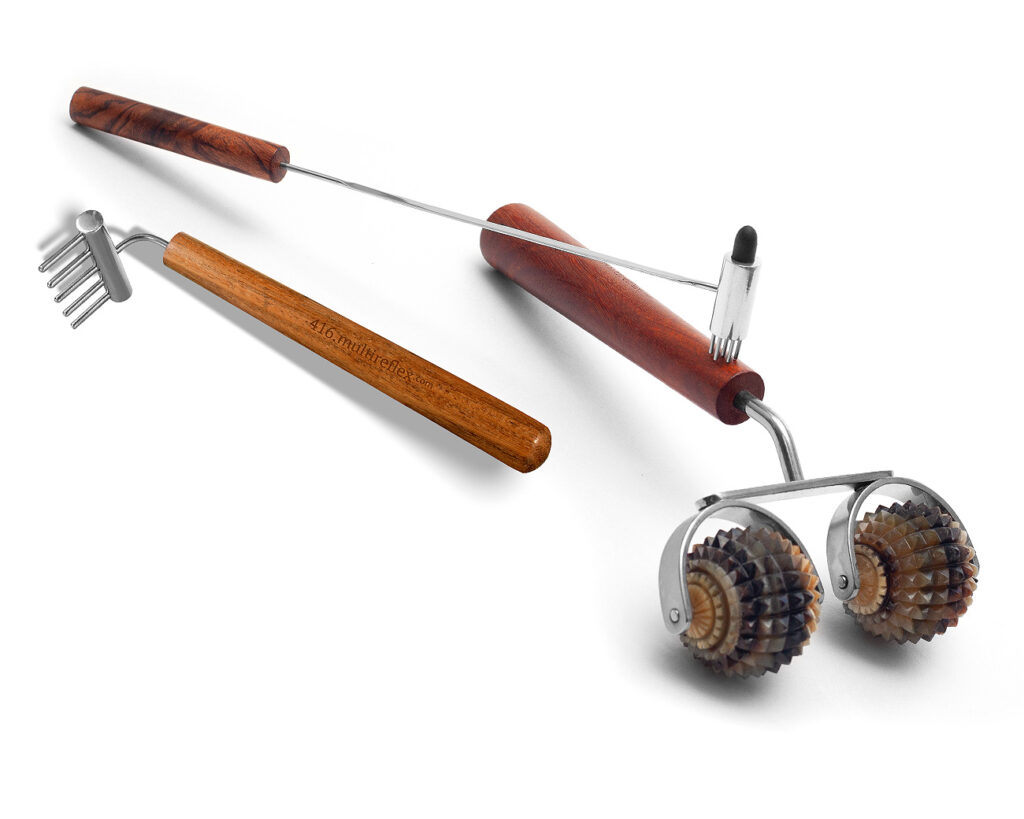
•!• If you prefer a yin approach, the kit “Joint disorders” will be the most suitable. It is also accompanied by the eBook “Joint inflammations”, offered with your purchase.
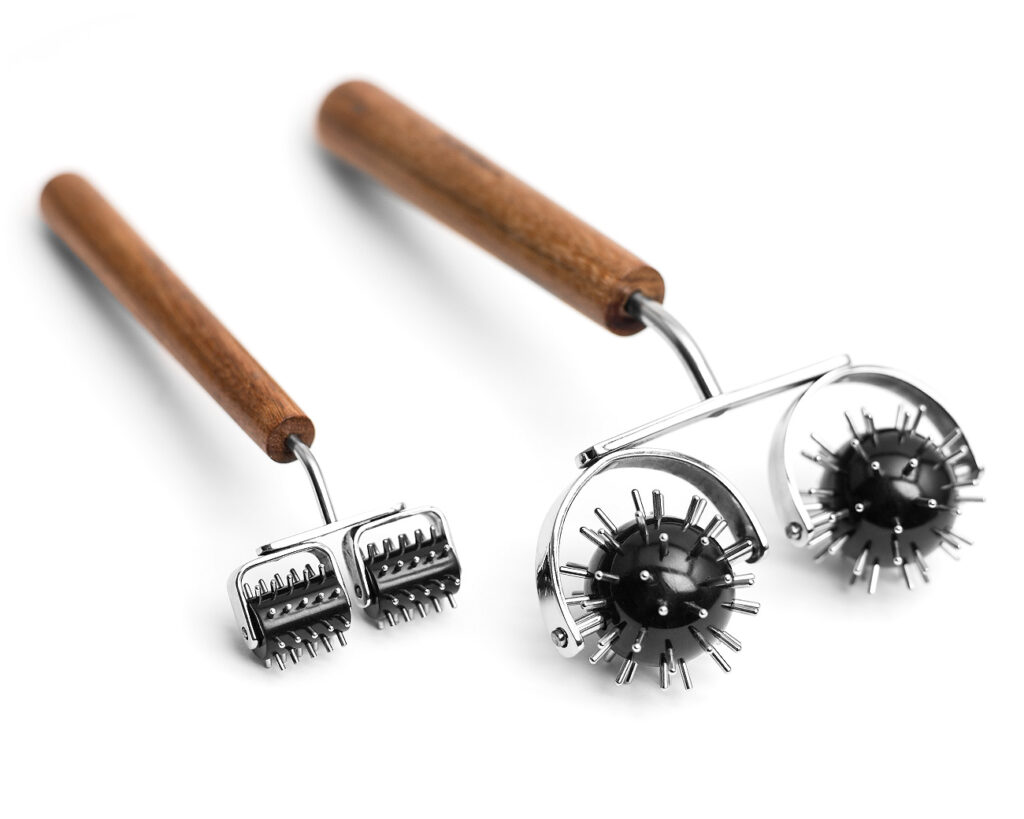
- The complete catalogue of tools › https://www.DienShop.com
- The official Dien Chan website › https://www.Multireflexology.com
- The catalogue of educational eBooks › http://ebooks.DienChan.expert
Shoulder pain: causes, solutions, and a natural approach
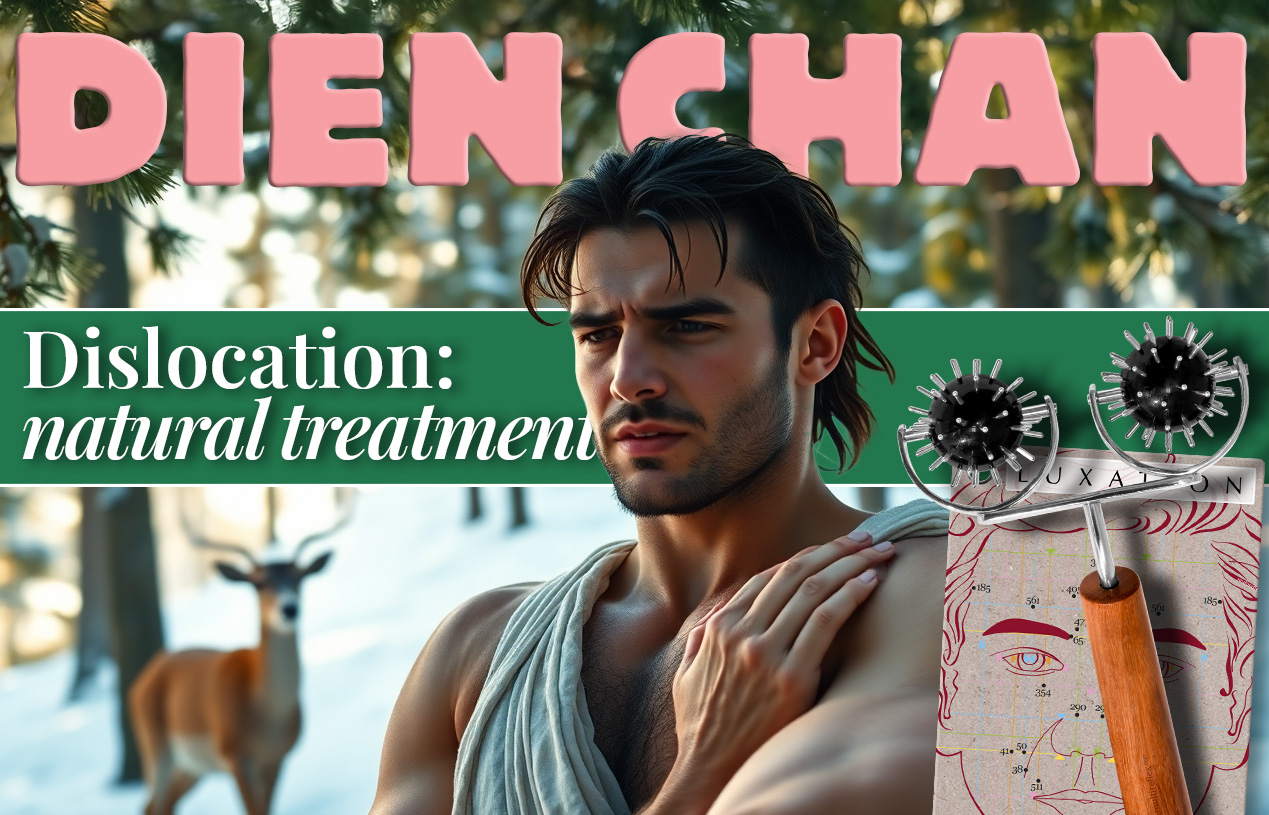
Shoulder pain is one of the most common discomforts that significantly impact our daily lives. Whether it’s muscle tension, tendinitis, or other causes, it can hinder our movements, limit our activities, and affect our quality of life. These pains, often triggered by poor posture, injury, or intense physical exertion, require special attention to prevent them from worsening.
Fortunately, Dien Chan, the original method of facial reflexology, offers a natural, effective, and non-invasive alternative to relieve these discomforts.
This approach is based on a structured care plan that begins by assessing the person’s overall condition. Then, work directly on the painful area (if possible) to determine whether the suffering is of yin or yang nature. This allows the use of a multireflex tool with the opposite effect, as our goal is to restore overall balance and promote recovery.
Finally, consolidate the treatment by stimulating specific reflex points located on the face. These bqc·points will come from a constellation, and by retaining only the most sensitive ones, they will compose the personalised formula perfectly adapted to our client.
This method, unique to authentic Dien Chan, encourages the body’s self-regulation, reduces pain, and improves mobility, provided there is no serious injury requiring medical intervention at the hospital.
In this article, we will explore the common causes of shoulder pain and present easy and accessible techniques in Dien Chan. You will discover targeted protocols to relieve the injury, improve your flexibility, and restore your daily comfort.
Whether you are an athlete, a healthcare professional, or simply seeking a natural solution for your pain, this article will provide practical information to integrate Dien Chan into your care routine.
The care plan
The care plan in Dien Chan is not just a simple protocol but an invitation to structure your care. Practising Dien Chan is not limited to the use of bqc·points. Although Prof. Bùi Quôc Châu’s research consisted of identifying fixed points common to all faces, resulting in the map of 257 bqc·points, it is crucial not to neglect the use of reflex diagrams.
These diagrams, unique to Dien Chan, were discovered through the assembly of certain bqc·points. It is this combination of reflex diagrams and bqc·point formulas that gives Dien Chan its strength.
Moreover, our extensive experience accumulated since 2002 has allowed us to understand that we can make the most of the time allocated to each session to first consider the person’s overall condition. Indeed, when our consultant arrives stressed or tired, it is important to restore their overall balance. This promotes acceptance of the subsequent treatment and thus achieves much more significant and lasting results.
We have also found that it is much more effective to start with local work, i.e., directly on the body, using the most suitable multireflex tool for the situation. This bodily step allows us to determine whether we are dealing with a yin or yang issue.
Then, we exploit certain reflex diagrams by working the reflex zones with a smaller multireflex tool but having the same effect (yin or yang) as that discovered during the previous bodily step.
Finally, we consolidate the care by mobilising the energies involved in the disorder through the stimulation of specific points.
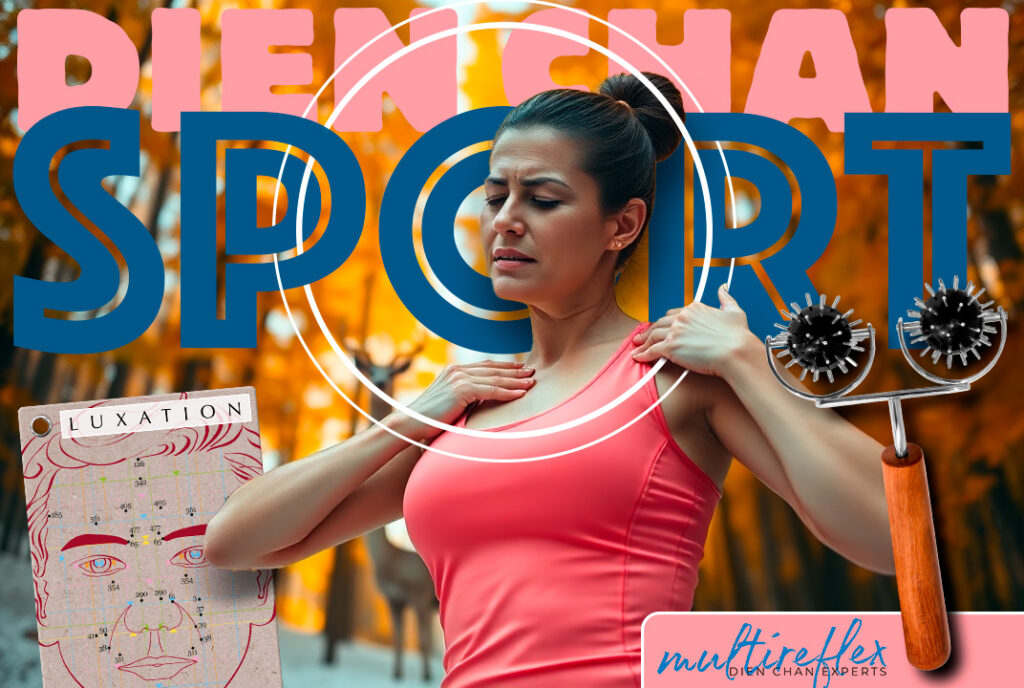
The objective of the International School of Multireflexology – Dien Chan (ISMDC) is to accompany you in developing your creativity so that you become the architect of your own care. For this, we offer you a care plan dedicated to shoulder pain, designed to take into account various causes. Be inspired by this proposal to develop personalised treatments adapted to each situation.
1 | General condition
There are many general conditions that can influence the effectiveness of a treatment. Most of the time, it is stress or fatigue, but it can also include challenging emotional contexts. Anxieties and other concerns should be taken into account if they risk constituting a hindering barrier for the continuation of the treatment.
To address these issues, we invite you to consult our article dedicated to emotional regulation www.dienchan.academy/dienchan-emotional
Here is a non-exhaustive list of common situations and appropriate solutions:
- Stress: use the “Preséance 124· 34·” with the Little-hammer nº128 to soothe the nervous system.
- Fatigue: energise vital energy with the “Yang formula”.
- Intoxication: apply the “Detox ritual” to support the elimination of toxins.
- Reflux: use the “cardia massage” protocol, performed along the left side of the nose.
These examples illustrate how to adapt your care according to the specific needs of your client to lay a solid foundation before proceeding with more targeted treatment.
2 | Bodily step
When faced with shoulder pain, we must first assess the situation precisely and interpret the expression of the disorder. This requires the ability to “translate” the information obtained during the dialogue with the person into Dien Chan.
For beginners, often influenced by biases inherited from Western medicine, this task can seem intimidating. This is why our training courses emphasise deconstructing these reflexes to develop a clearer vision and active listening.
Do not hesitate to consult the training schedule and online workshops to perfect your learning of authentic Dien Chan.
In this approach, we prioritise observing improvements rather than focusing solely on the pain (see article about improvement).
Identify the nature of the pain
Precise, hot, sharp, or acute pain corresponds to a yang situation. To address this, use a yin multireflex tool, such as the Double yin ball nº411.
Conversely, dull, cold, deep, or heavy pain is of yin nature. In this case, opt for the Double yang ball nº410.
Whichever tool is chosen, perform a series of about fifty back-and-forth movements on the painful area. Apply only the weight of the tool, without forcing. Between each series, ask the person about their feelings to evaluate the appearance of any improvement, even slight.
If no progress is observed, rephrase your questions to ensure that the initial description of the pain was well understood. Alternate between yin and yang effects and ask the person to specify which sensation feels more pleasant; this response is often a key indicator.
As soon as you notice an improvement, even minimal, you can move on to the next step, which involves working on the facial reflex zone corresponding to the shoulder. This will justify prolonging and deepening the effects of the treatment.
3 | Reflex step
After identifying the most appropriate effect to treat the pain, it is time to select a reflex diagram to guide our intervention.
Note that there is no best diagram. Each one represents a different access point to the regulation process, and the multireflex tool acts as a key to unlock tensions.

Although the goal is to relieve the shoulder, it is often wise to start with the overall treatment of the upper back. Thus, begin by selecting a reflex diagram that targets the shoulder girdle. To assist you in this choice, the video accompanying this article shows how Faceasit can guide you and help you avoid forgetting relevant diagrams.
Using the extremities diagram, you will notice that the representation of the “little red man” locates the shoulder girdle at the level of the eyebrow arch.

≥≥≥≥≥≥VIDEO Faceasit≤≤≤≤≤≤≤
For those who have the Faceasit app, here is how to find the relevant diagrams and the formula to consolidate the management of shoulder pain.
Practical steps
- 1. Choose a tool suitable for facial areas
- Yang effect with the Double mini yang ball nº307.
- Yin effect with the Double mini yin roller nº308.
Evaluate the improvement

- If the improvement score increases, continue with this diagram.
- If no change is observed, move on to another diagram.
To refine your intervention, complement with the so-called “Rodin” diagram, where the shoulder’s reflex zone is located between the temple and the ear.
- Use the multireflex tool corresponding to the required effect (yin or yang).
- Practice a new series of movements in this area.
Continue to evaluate improvements and adjust your approach if necessary. This flexibility in using reflex diagrams allows optimising results and better meeting the specific needs of each consultant.
4 | Consolidation
If your previous intervention is satisfactory, we can then reinforce and stabilise the treatment by revitalising the energies involved.
We will prepare a constellation composed of bqc·points acting on the muscles, tendons (in accordance with Western medicine) and taking into account the meridian paths (TCM) that pass through the shoulder.
Indeed, some pains can also be caused by imperceptible energetic blockages. By stimulating bqc·points acting on a specific meridian, we succeed in encouraging the flow of vital energy (Qi).
As you can see, Dien Chan draws its great strength and achieves the best results when we combine knowledge.
Once our constellation is established, we will test and retain only the most sensitive bqc·points to develop a fully personalised Dien Chan formula adapted to the current situation of our consultant.
Faceasit is the ideal tool to inspire and create individualised treatments (see video).
For our readers who have not had the chance to be offered an iPad to use Faceasit, we will break down a proposal. And to illustrate the steps to follow precisely, let’s take the example of a dislocation of the left shoulder.
Recall that a shoulder dislocation occurs when the humerus comes out of its joint cavity at the joint level (glenohumeral). This can occur following trauma, such as a fall, or forced movement. Symptoms include intense pain, inability to move the shoulder, visible deformity, and sometimes numbness or weakness in the arm.
Assume that the shoulder has returned to its correct position, but there is damage to the muscles and tendons that have been stretched, torn, and may also be bruised due to the tensions experienced during the dislocation or the period of immobilisation.
bqc·points to test to compose a constellation:
- The shoulder: 511· 65· 477·
- The muscles: 156· 38· 37·
- The tendons: 50· 41· 156·
- Lubricate: 354· 38· 61– 3–
Moreover, the trauma may have disrupted the energetic circulation of the meridians passing through the shoulder. This consideration is essential, as it will guide us not only in the choice of bqc·points for our formula but also in our patient interview.
In traditional Chinese medicine (TCM), the shoulder is associated with several energetic meridians, mainly those that pass through this region. We can solicit them thanks to the bqc·points of Dien Chan.
bqc·points to test to complete our constellation:
- The Large Intestine meridian that crosses the shoulder, particularly the deltoid region: 561· 38· 342·
- The Stomach meridian touches certain frontal areas of the shoulder: 39· 405·
- The Triple Warmer meridian is directly involved in the shoulder region: 290· 185· 235·
- The Spleen and Liver meridians are concerned with tendon and muscle tensions around the joints: 37· 50·
- The Bladder meridian may be engaged through its connections with the back muscles: 87· 126·
After eliminating duplicates, we obtain a proposal to test. With Faceasit, you will notice that the selection includes more bqc·points, but for pedagogical purposes, we limit ourselves here to the points we consider important for this example. This does not mean that they are the best; it is up to you to test and adapt your choice according to your needs.
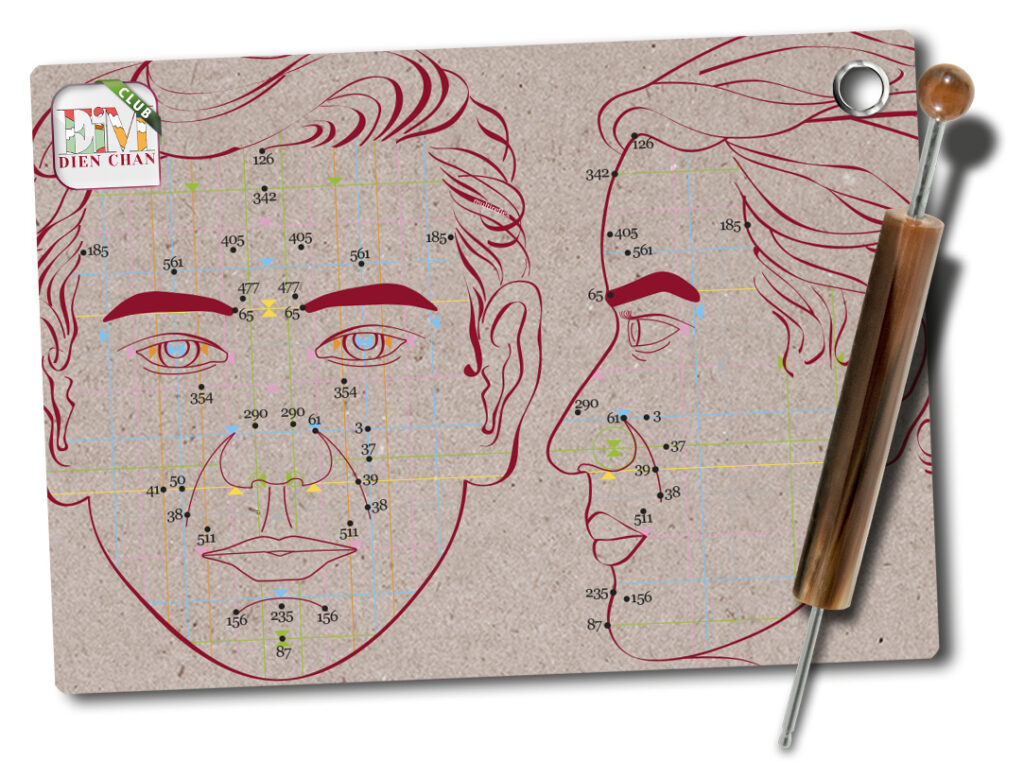
We thus obtain this constellation:
511· 65· 477· 156· 38· 37· 50· 41· 354· 61⁻· 3⁻· 561· 342· 39· 405· 290· 185· 235· 87· 126·
Remember that bqc·points followed by a ‘–’ sign means that we only stimulate the left one (yin to encourage internal moisture) and a ‘+’ sign to the right (yang).
5 | The prescription
At the end of the session and to prolong the benefits of the treatment, it is essential to advise your client to continue with simple exercises to do at home.
Depending on their general condition, you can recommend the 12 morning massages (12.multireflexology.com).
Regarding their shoulder, show them how to perform self-massage directly if the bodily step has produced positive reactions. It is also wise to explain how to continue on the reflex zone that has given the best results.
With one or two multireflex tools — which you can offer for purchase or indicate where to procure them on www.DienShop.com — your client will be able to consolidate the effects of your treatment
Moreover, if you estimate that several sessions are necessary and that they apply your advice, their next visit will allow you not to have to start from the beginning. You will thus obtain much deeper and lasting results.
Conclusion
Caring for shoulder pain in Dien Chan involves offering a natural, effective, and personalised approach to support the body’s regulation process. By combining bodily steps, facial steps, and the use of appropriate multireflex tools, you can relieve pain, improve mobility, and restore the well-being of your consultants.
Remember that each case is unique! Attentive listening, precise evaluation, and adaptation of techniques are essential to achieve the best results. By involving your clients in the follow-up of their treatment, especially through simple exercises to practice at home, you help them become actors in their own health.
Dien Chan is not limited to relieving symptoms. It invites a holistic and preventive vision of health, where each treatment contributes to the overall harmony of the body and mind.
Whether you are a beginner or an experienced practitioner, this protocol will allow you to refine your skills while offering lasting relief to your clients.
To further explore the benefits of Dien Chan, discover the rich and varied resources of our blog (dienchan.academy) and our channel www.DienChan.tv teeming with inspiring advice videos.
Dienchannely yours,
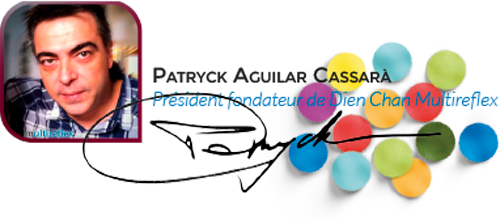
DIENCHAN❜sport
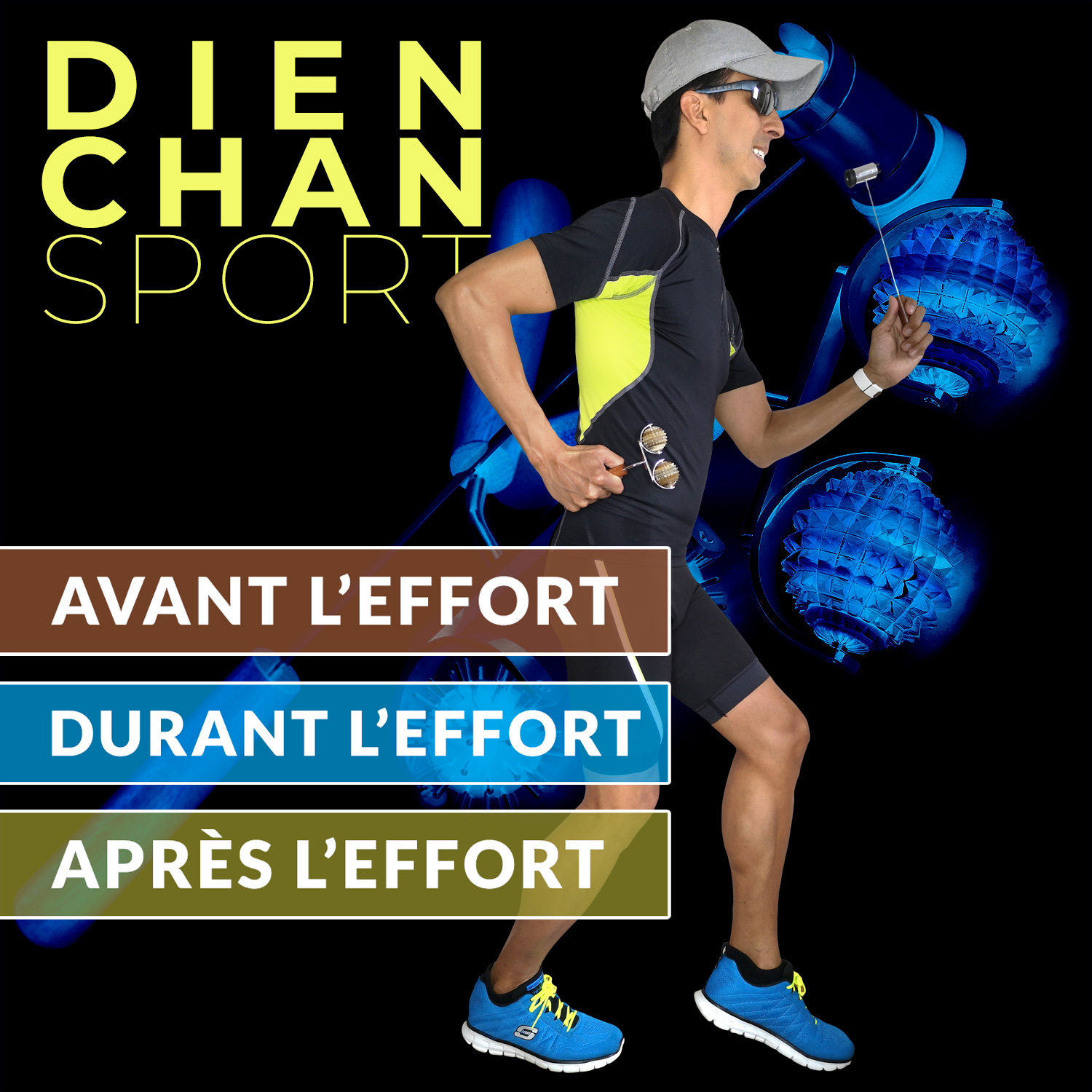
Dien Chan action plan for sport
Dien Chan is much better known for its treatments of common disorders or rapid pain relief than for its potential in sports preparation.
Indeed, we achieve excellent results because we address people in top form. Dien Chan challenges and stimulates our self-regulation process and energises vital energy; what traditional Chinese medicine (TCM) calls Qi.
It is this revitalised tone that we direct towards stagnant areas so that the body can do its natural healing work.
This is why it is easier to take care of a sporty and healthy person. Their Qi being more lively, we undo their blockages more quickly.
For the care of people not yet at their peak, we must start by optimising the movements of vital fluids, their organic functions and their Qi before we can concretely address the disorder.
However, we will not claim to repair a broken bone or put a hip back in place. Each technique has its limits and we always invite patients to visit an osteopath, consult a doctor or go to the hospital depending on their pathology.
Consequently, Dien Chan has the power to help athletes by providing substantial support to the work of preparing the body and mind.
We take advantage of its incredible possibilities to stimulate blood and lymphatic circulation, strengthen muscles, increase potential and performance.
Similarly, this non-invasive technique offers multiple possibilities for the local treatment of many pains that appear during physical exercise.
Dien Chan is an excellent ally for pre-competition and post-competition massage sessions.
Easy-to-apply protocols can, among other actions:
— Strengthen or relax muscles
— Set mental goals
— Drain toxemia accumulated in muscles and produced by muscle wear.
It goes without saying that a healthy diet and good hygiene (hydration, sleep, etc.) are essential.
In this article we present the field of action of Dien Chan in three main phases.
Here is a small video so you can get an idea of the gestures used to treat with Dien Chan tools.
–› If you are interested, at the bottom of this page we offer you a special deal for the multireflex tool kit composed of three body instruments.
◾︎◾︎◾︎ The 3 main phases of DienChan❜sport ◾︎◾︎◾︎
Much more complex (but not complicated) than a simple reflexology method, Dien Chan offers several approaches that combine with each other to offer the best results while adapting to the person.
We thus have the possibility of expressing all our therapist talent by personalising our care during each step.
1| Pre-competition: before the effort
Dien Chan has the power to help athletes by providing substantial support to the work of preparing the body and mind.
We take advantage of its incredible abilities to energise blood and lymphatic flows, strengthen musculature and increase power.
2| Competition: during the effort
Similarly, this non-invasive technique offers multiple possibilities for the local treatment of many pains that appear during physical exercise.
3| Post-competition: after the effort
After the effort, Dien Chan is a major ally for massage and stretching sessions. Easy-to-apply protocols relax muscles, have beneficial effects on the body and mind.
What is Dien Chan?
Dien Chan is the original method of facial reflexology. Its chart of acupressure points and various reflex diagrams make it a very effective natural healing technique.
The proximity of the face to the brain allows us to perform delicate and precise work with rapid effects.
We speak of multireflexology, because we combine the reflex zones with each other and complement them with precise stimulations of bqc·points formulas.
Several of our therapist students and instructors follow top athletes. They have developed multiple solutions over the past ten years.
Montse García-Pallarols, trainer in sports massages and other care techniques, uses Dien Chan with many athletes during national and international competitions in various disciplines. She also collaborates as a sports masseuse with the Spanish women’s hockey team, the “Red Ladies”. She helped us compile several tips in this article to understand the benefits offered by Dien Chan.
◾︎ How do we work?
Dien Chan is not practised with the fingers, and even if we sometimes speak of “massage”, we are referring to tonification or relaxation work using delicate instruments.
Despite their appearance, which may surprise, multireflex tools do not damage the skin.
They are divided into two main categories:
— The multireflex yin tools that allow cooling, dispersing, draining and encouraging hydration.
— The yang instruments that help to heat, concentrate, energise and dry.
Oh! We know that the concepts of yin and yang are not very well known to the general public.
In Dien Chan, we use them in an extremely practical way.
This means that we focus on the effects provided by the multireflex tools used.
It is very easy to understand and the file tools.DienChan.pro illustrates in detail the multiple yin-yang solutions of Dien Chan.
Therapists speak of real “health jewels” and are proud to display them on social networks under the hashtag #multireflex!
We offer small Dien Chan tools for working on the face and other larger models specialised for body care.
› Before the effort:

There are many body massages to help the athlete before exercise. However, these are mostly manual or electrical.
The athlete preparing for a competition or sustained effort must not exhaust themselves. They will stay in motion and work on their tactics and mental preparation.
The goal is to bring as much energy as possible to the muscles and structure, we can enrich the preparation by stimulating large areas in a yang way.
The more the muscles are warmed up, the less risk of injury.
This means that we will fully utilise the energising effects of stimulations using a yang multireflex tool suitable for the large muscles of the legs, arms and back.
Then, to strengthen and stabilise their mental state, we use certain bqc·points that address the central nervous system. These series of points are called “bqc·point formulas”.
Body work
Using the Double yang ball nº410, perform about fifty back-and-forth movements —without pressing too hard— on the muscle groups that will work the most.
This body step is essential to revitalise the microcirculation of the blood.
Its natural horn spike balls promote blood oxygenation and tone the muscles. This avoids stagnation and:
— Causes hyperaemia of the area by increasing blood flow.
— Stimulates nerve endings.
— Promotes the excitability of muscle fibres.
— Ensures the overall dynamism of the worked limb.
Facial work
On the face, we recommend a bqc·point formula that stimulates adrenaline and cortisol. It also improves joint lubrication.

Apply the bqc·points formula in this order and only those on the right with the Detector nº101 or the Little-hammer nº128:
14· 156· 17· 38· 45· 1· 300·
124· 34· 103· 106·
Stimulate each bqc·point for about thirty seconds by applying sustained pressure. We must feel the point and not the pressure.
Explanation of the formula:
14· increases internal moisture and cools the joints (endocrine system, thyroids).
156· to make the muscles more flexible (anti-inflammatory and bladder meridian).
17· to stimulate the adrenal glands (adrenaline).
38· to promote joint lubrication (large intestine and immune system).
1· to enrich the blood (spinal cord).
45· 300+ to strengthen the kidneys (cortisol and increase Qi).
124· 34· combinations of bqc·points that balance the nervous system.
103· 106· to strengthen the mind (the connection between the two cerebral hemispheres).
› During the effort:

During the competition, the medical staff is on standby!
Health personnel, physiotherapists and sports masseurs follow the event and observe the athletes’ game. They remain vigilant in case of injury.

We must help the athlete and prevent them from suffering. We must therefore quickly relieve all the small blockages that cause pain.
By knowing the reflex diagrams of Dien Chan, we act immediately on the facial reflex zone.
When the pain is described as dense, concentrated, hot or precise, we consider it a yang symptom.
We therefore intervene with a yin multireflex tool that facilitates relaxation, cooling and dispersion.
By always having the Yin-yang roller nº206 on hand, we can quickly access the reflex zone on the face.
If we have time, we can also work on large surfaces with the Double yin ball nº411 (or the Double mini yin nº308) to perform about fifty back-and-forth movements without pressure.
If we are faced with cramps, we complement with 3 rapid and sustained pressures on the following bqc·points:
37· 156·
These two bqc·points are powerful relaxants.
Repeat the operation each time it is necessary.
› After the effort:

We must now relax all the muscle structures, disperse congestion and eliminate the toxins that have accumulated in the fibres.
Since we have more time, we recommend rolling with the Double yin ball nº411 all limbs and extremities.
Then, we benefit from a very effective formula to cleanse the blood and promote the elimination of toxins:
50· 41· 37· 39· 85· 87·

Then, we practice the Reflexdrainage which consists of performing a facial massage that rebalances the functions of the lymphatic system.
Explanation of the formula:
50· 41· to strengthen the detox capacities of the hepatic system.
37· to calm muscle tensions.
85· 87· to encourage urination and elimination.
——› To learn how to do Reflexdrainage, consult the complete file of www.DienChan.zone and its video.
Here is a multireflex tool kit to get started easily
All genuine multireflex tools are handcrafted in an environmentally friendly way. We choose noble materials such as mimosa wood and natural horn recovered from the traditional agricultural sector so that no animal suffers or is raised for its antlers.
The yin effect tips are made of high-quality metal such as the gold-plated cylinders of the dorés.
We prefer genuine horn for its natural antiseptic biological properties. Unlike plastic, it does not cause static electricity that disrupts the skin microbiota.
❉ Each utensil has a name that may vary, but it also has a reference number that, followed by “multireflex.com”, takes you directly to its detailed sheet. Example: http://410.multireflex.com for that of the Double yang ball nº410.
Chan❜pro secret
After the effort —if we have sufficient knowledge in Dien Chan—, the ideal is to complement the care with a more specialised and fully personalised formula.
This consists of testing the points offered by the Dien Chan app named Faceasit and retaining only those that are the most sensitive.

The detailed sheets of the retained bqc·points will then help you to identify your athlete’s weaknesses.
This is how we make the most of the “Chan” concept in Dien Chan, which means “diagnosis and treatment” at the same time.
Everything is relative and imbalances are expressed in the least reinforced parts of the body. This perfectly illustrates the famous “Tuy” which means “it depends” in Vietnamese.
▶️ Here is a small video to better understand how Faceasit becomes the ultimate in facial reflexology – Dien Chan.
✔︎ The article that explains in detail the formulas of this video is also in this blog (here).
To listen to your intuition, you must know the structure of the care protocols, understand them and be able to break them down. This is when you can personalise your care and obtain the best results.
Learn Dien Chan with the experts of the International School of Multireflexology – Dien Chan (ISMDC) and seduce your clientele with an elegant therapeutic gesture that expresses your talent.
✚ INFO
- Dien Chan training
- Multireflex tools
- The Faceasit app of Dien Chan
- Contact us by email
- This article is an overview of the many possibilities offered by Dien Chan to help amateur athletes. Dien Chan does not replace medical consultation.
Patryck Aguilar-Cassarà
Founding president of the International School of Multireflexology – Dien Chan

ℹ️ This article accompanies the intervention of Patryck Aguilar-Cassarà during the colloquium “Natural therapies at the service of sport”.
Article written under the supervision of Dien Chan experts who have been following top athletes for years and collecting testimonials from athletes practicing DienChan’sport.
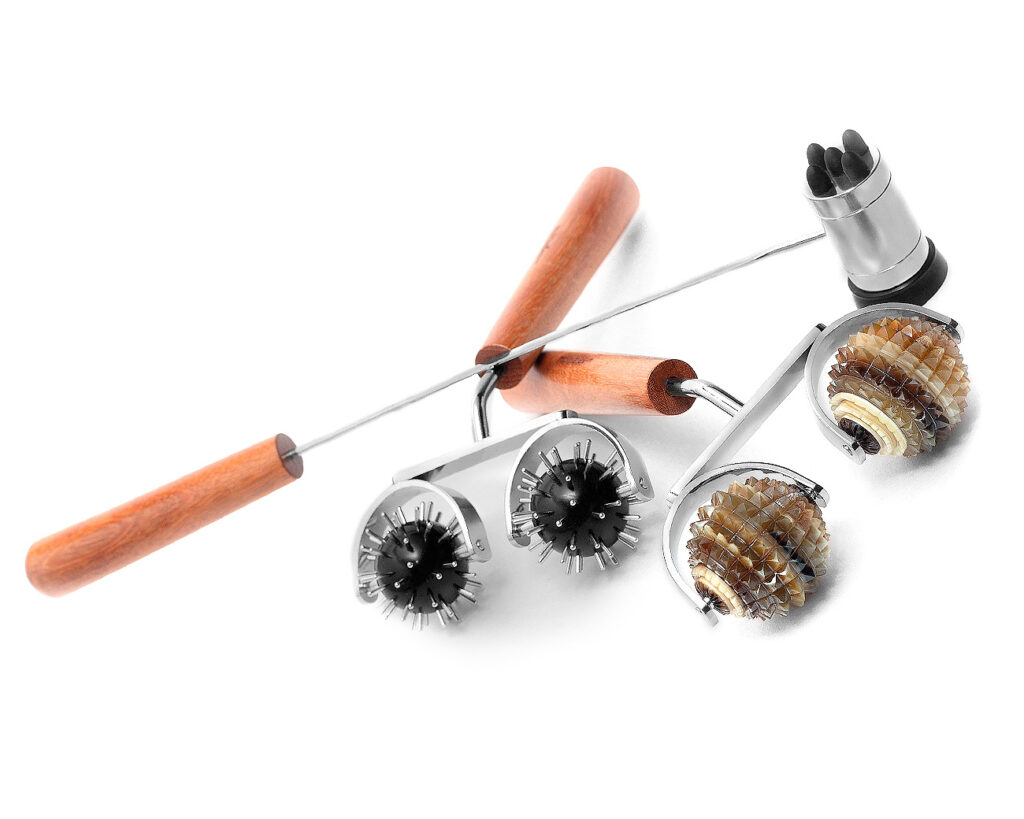
Constipation: yin or yang?
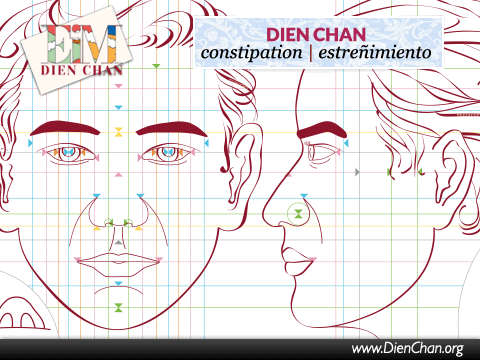
Learn how to distinguish between yin and yang constipation. To structure a personalised care plan, we need to be able to differentiate between the two types of constipation. This means they may be symptoms of very different dysfunctions.
Even though we may not like to talk about our bowel movements, it is a recurring topic for our clients.
So, before making them drink like hippos… let’s take a moment to ask the right questions!
Having regular bowel movements is a fundamental daily need. However, we observe that far too many women and elderly people suffer from chronic constipation.
Let’s not overcomplicate things or get lost in explanations borrowed from Western medicine, which does not distinguish between yin constipation and its yang counterpart.
Laxatives only provide temporary relief in emergencies and damage the intestinal flora without addressing the root cause.
It is much more effective to approach the situation holistically. Let’s build a personalised care plan.
With the first step of our care plan, we will be able to identify the possible causes.
While addressing the individual’s overall condition, we engage in dialogue and begin by “translating” the information gathered through subtle questioning.
1| For the first step (stress, fatigue, etc.), I refer you to the blog articles that detail care plans for numerous examples.
› You can also watch the video where Hélène Alvanitakis and I explain the care plan in Dien Chan: https://youtu.be/Yb3z6HTDB1U
… but let’s get back to our sheep droppings!
Our initial interpretation has led us to one of the following two paths:
The yin causes
Often caused by a weakened microbiota:
- Emotional: obsessions and anxiety (the spleen)…
- Blood stagnation (weak Qi).
- Dietary: lack of fats, cold food
- Parasites: amoebas, etc.
- Their symptoms:
- Lack of strength
- Feeling cold
- Pale face
To avoid:
- Laxatives, as they destroy the intestinal flora and weaken the gut.
- Cold food and raw vegetables.
- Excessive water intake.
2| Bodywork step
Regarding constipation, it is rare that we use abdominal stimulations during a consultation. However, it is highly recommended to show the person how to “roll” their abdomen using the most appropriate tool.
❉ If you are convinced their constipation is yin, suggest the Double yang ball nº410 for their at-home practice.
However, we will revisit this topic during the “prescription” step of our care plan.
3| The facial step
It involves selecting a yang multireflex tool, such as the Double mini yang ball nº307 or the Detector yang ball nº103.

This is the reflex diagram of internal organs on the face, which shows the path of the large intestine around the mouth.
Since we are dealing with yin constipation, we will follow the natural path of the intestine using the yang tool. This means going from right to left, then descending towards the chin.
The ideal is to perform small back-and-forth movements while respecting the direction, as if scratching a lottery ticket. Be careful!! Always make elegant movements, without damaging the skin.
The yang effect of the instrument is sufficient, as it stimulates peristaltic movements and restores energy to the circulation (blood and Qi).
› Stimulate yang in this manner at least five times.
4| Consolidation
This is where the bqc·points reveal their full power. By preparing the person holistically, addressing their general condition (the essential first step), and stimulating the reflex zones, we now have an extremely receptive brain.
Since we are dealing with constipation with yin symptoms, we will activate the bqc·points included in this proposal, moving from the chin upwards to the forehead:
Formula: 365· 44· 235· 63· 19· 1· 290· 39· 38· 3– 342· 300+ 126·
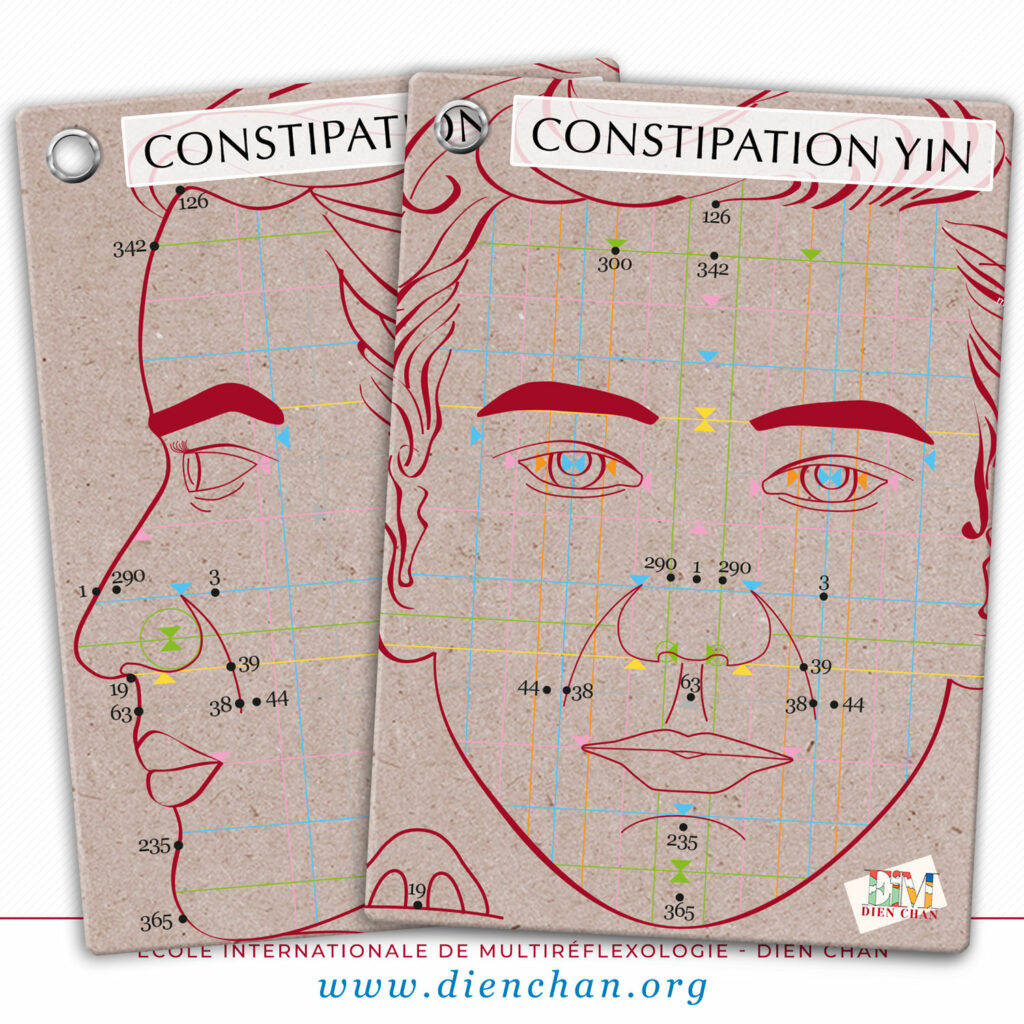
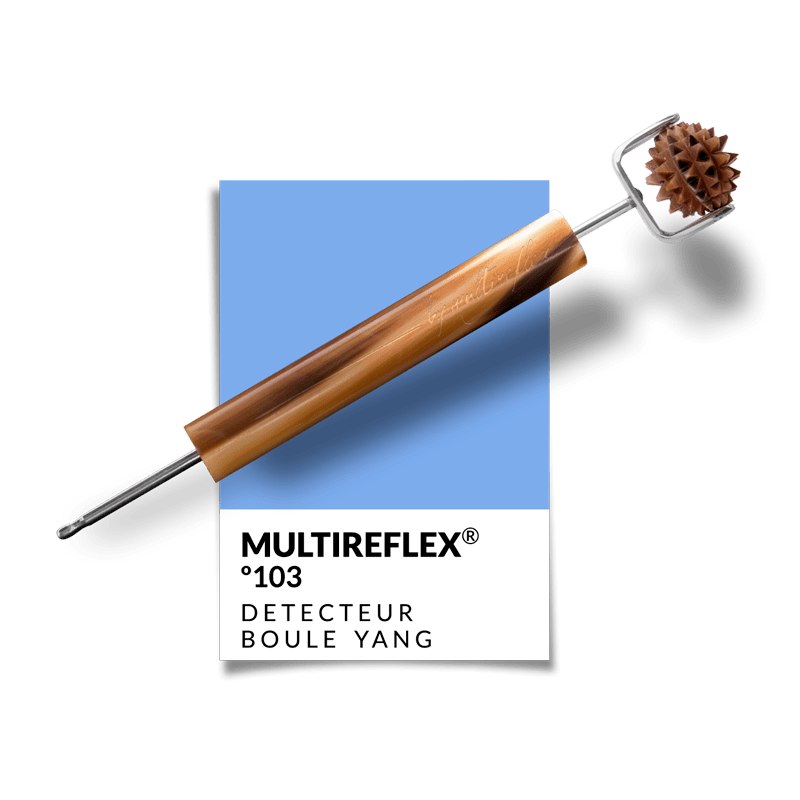
This article is designed to help those who have already studied Dien Chan. You can find the reasoning behind these points·bqc by selecting each one in the Dien Chan app named Faceasit (+info here).
kit❜reflex Yin Constipation
Yang causes
These are the most common as they involve internal overheating:
- Emotional: repressed anger (the liver), unexpressed frustration (the gallbladder)…
- Dietary: lack of water, insufficient fibre, excess animal protein…
- Their symptoms:
- Bad breath
- Bloating and dry stools
- Facial redness
- Poor stress management
To avoid:
- Spicy foods, alcohol, and hot dishes
- Excess fats and starchy foods
2| Body step
As mentioned earlier, we recommend showing the patient how to “roll” their abdomen using the most suitable tool.
— If you think the condition is yang, then the Double yin ball nº411 will be the most appropriate.
Check the “prescription” step of our care plan for additional tips.
3| Facial step
This step involves choosing a yang multireflex tool such as the Double mini yin roller nº308 or the Yin-yang roller nº206.
Once again, the facial reflex diagram of internal organs guides us to follow the large intestine’s path around the mouth. Using the yin tool, we move naturally from right to left, descending downward.
› “Trace” this path with an elegant and light motion.
The yin effect of your tool will normalise endogenous hydration and disperse blockages.
› Perform this yin work at least 10 times.
4| Consolidation
Our consultant is now ready to receive a regulatory formula.
Since our aim is to stimulate internal movements, we will activate the bqc·points from the top of the forehead downwards:
ƒ 126· 3– 37· 143· 50· 41· 38· 44· 87·
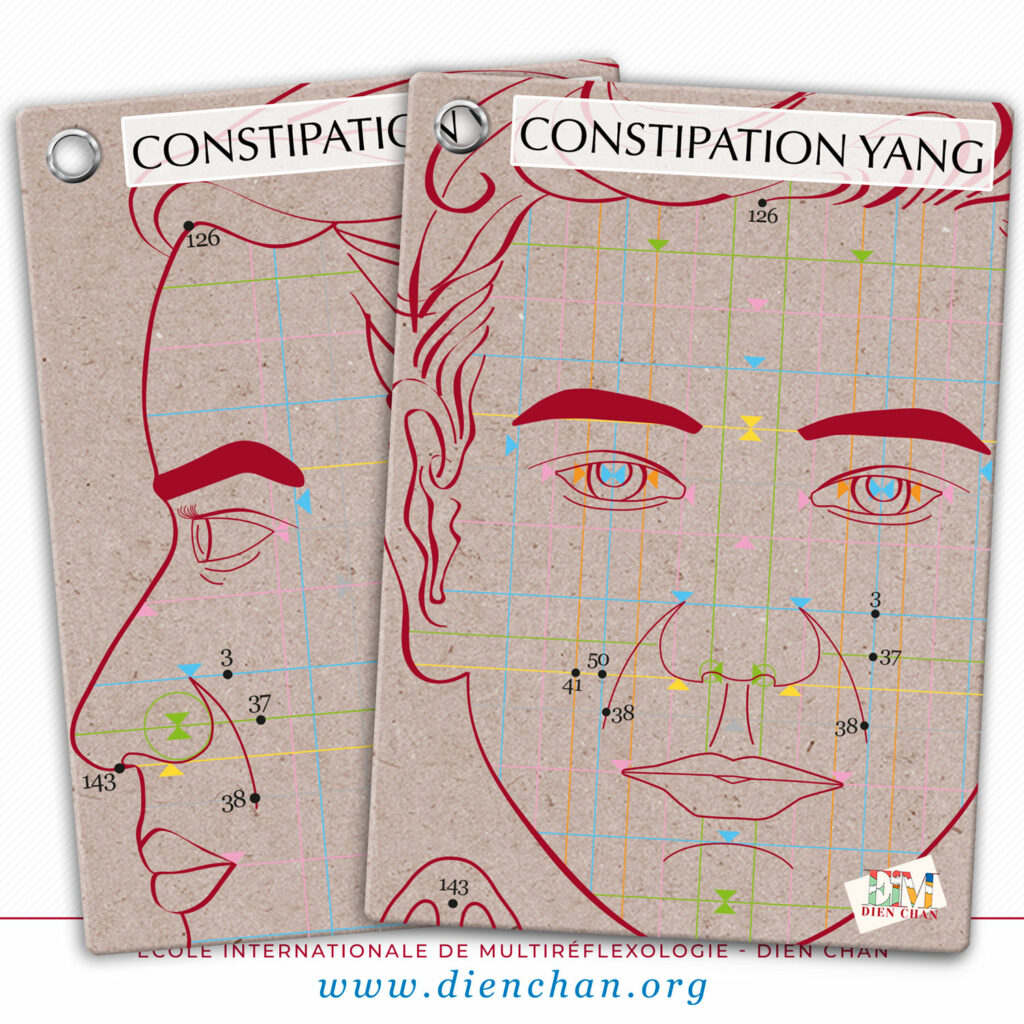

This article is primarily intended for our students who have learned how to break down formulas. However, you can access detailed cards for each point·bqc by tapping on them in the Dien Chan app called Faceasit (+info here).
kit❜reflex Yang constipation
Conclusion
Regardless of the type of constipation to be treated, you can enhance your care by testing the following bqc·points and integrating them into your formula:
- 399· and 561· to stimulate the energy of the Large Intestine meridian
- 348· if facing blockages at the exit (!!)
- 305· if you want to increase peristaltic movements
- 104+ if facing gas accumulation or inflammation of the intestine
⚠️ Avoid the bqc·point 19· if you suffer from high blood pressure.
—› To learn how to complete your Dien Chan formulas, I also invite you to read the blog article https://dienchan.blog/formules-points-dienchan
5| The prescription
As mentioned earlier, you can recommend a yin or yang multireflex body tool depending on the type of constipation.
—› Show the person how to massage the contour of the mouth (see animated image at the top of the article) at least every morning.
—› You can also suggest gentle abdominal massages with a tool that can be used both on the face and the body: the Beauty ova nº373 made of bamboo.
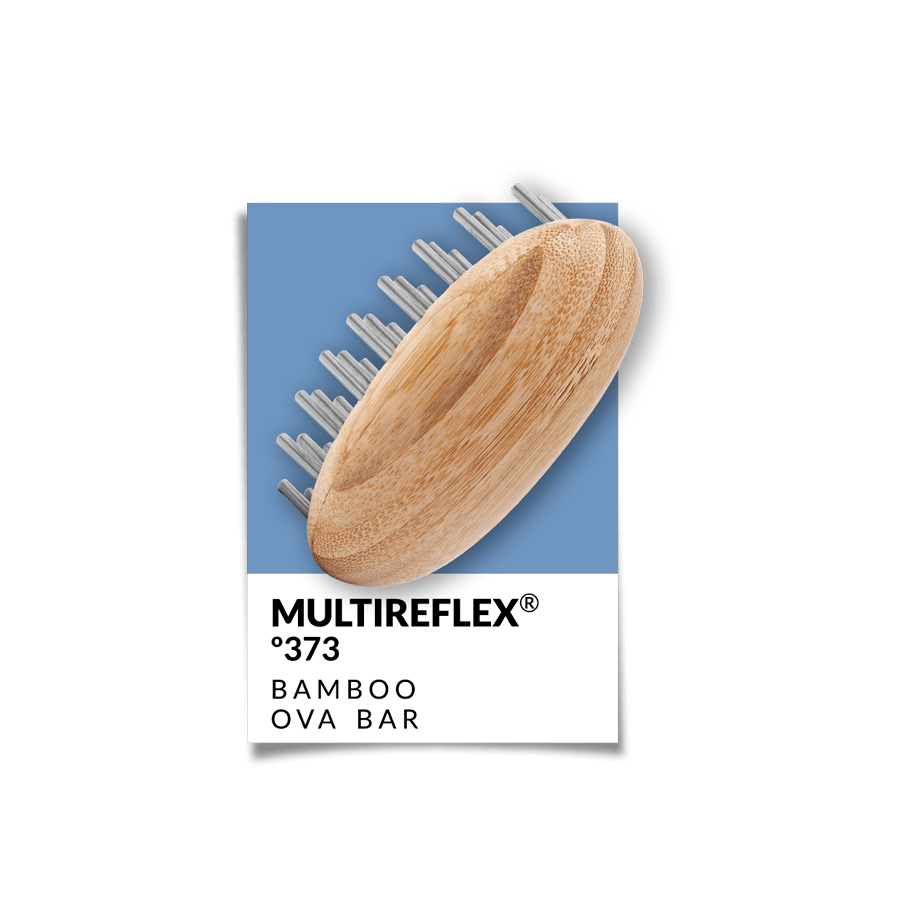
With the Beauty ova, your patient will be able to massage not only the abdomen but also the contour of the mouth (from right to left and towards the chin), every day upon waking up.
It will seem obvious to you that the person should be instructed to take their meals in peace, without brain overstimulation (put away their smartphone) and to chew well.
Dietary advice baskets are available online; among others:
- Foods rich in fibre (banana, figs, apricot, green vegetables…)
Prefer first cold-pressed olive oil (Spanish is better)
Choose chicory over coffee and organic apple juices. - Practice walking.
The kit❜pro
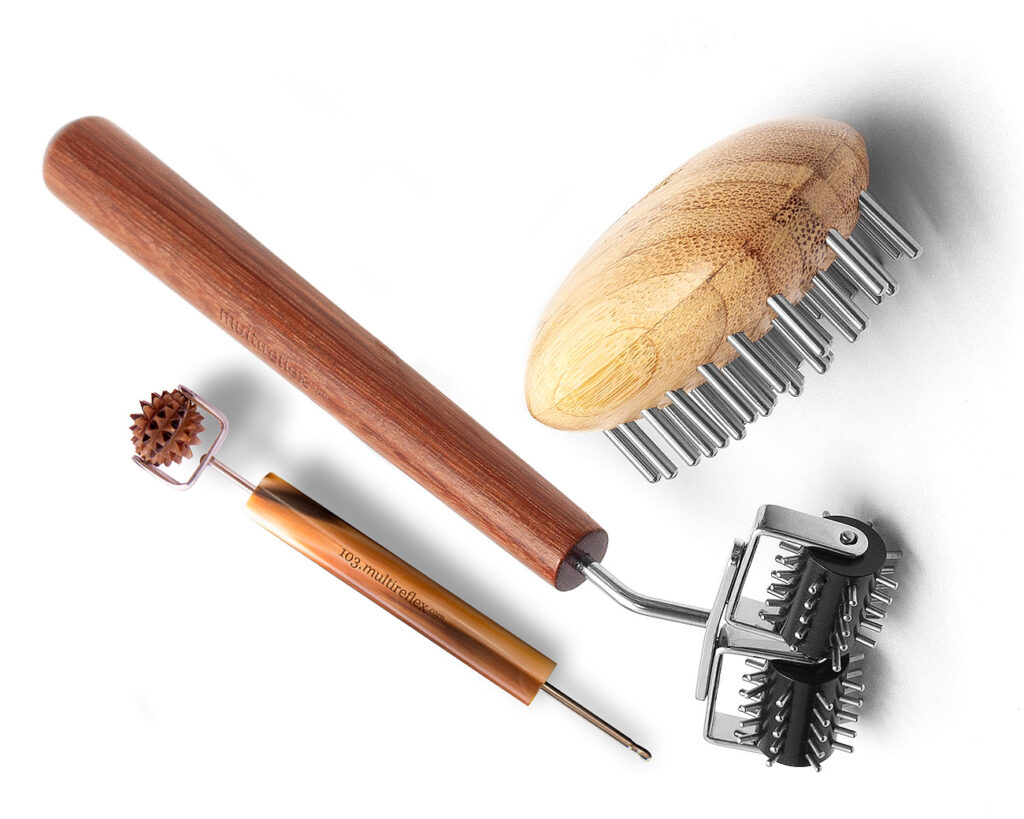
Harmonising your sleep through Dien Chan: natural and effective solutions
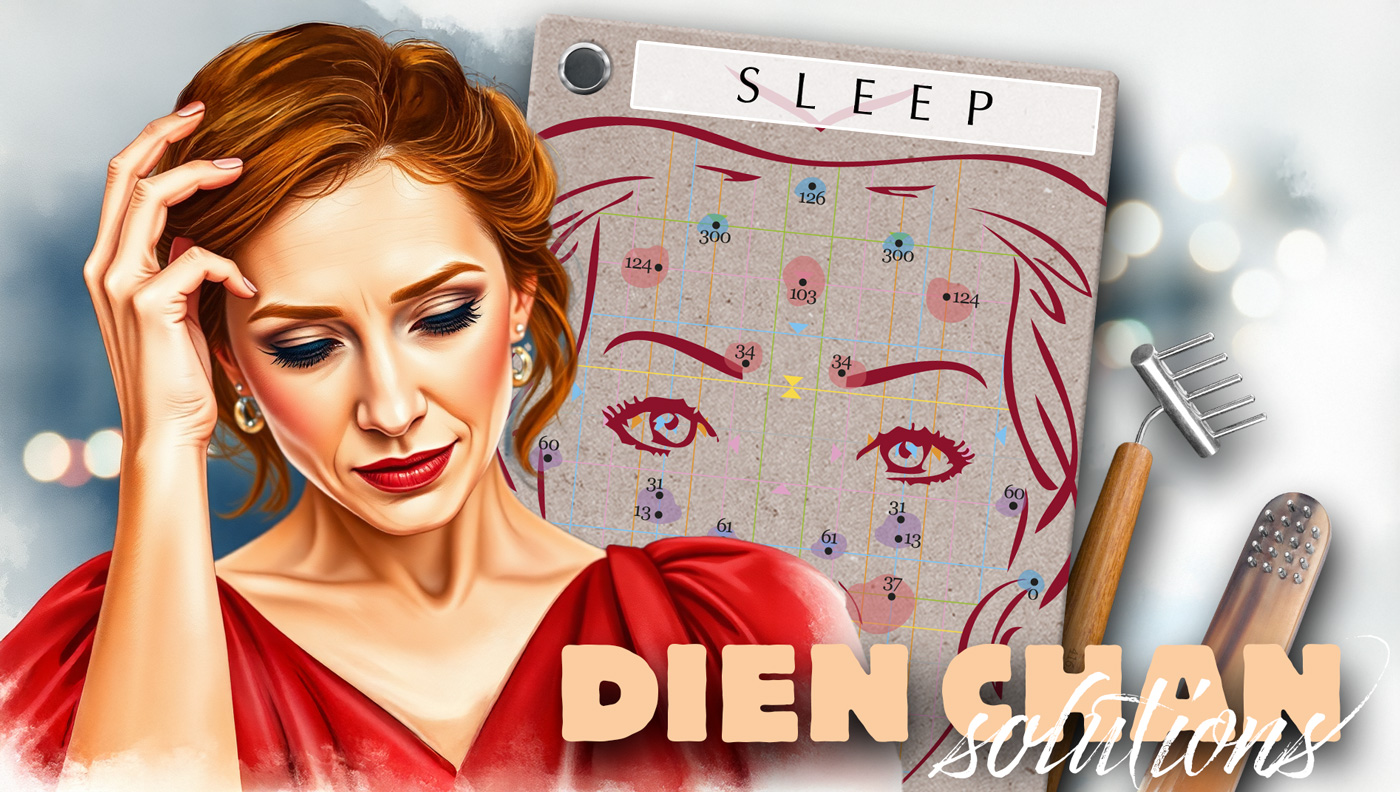
Sleep is a fundamental pillar of our health, essential for the regeneration of both body and mind. However, it is often disrupted by stress, frustrations, or the anxieties of daily life. These emotional disturbances, even if temporary, can deeply affect our body, disrupting our energetic balance and compromising our overall well-being.
In the face of these difficulties, do not fall for the allure of chemical solutions. The use of sleeping pills should only be considered in exceptional cases and under strict medical supervision. These pills, far from addressing the true cause of your sleep disorders, merely mask the sensation of insomnia without offering genuine rest. They prevent the brain from learning or relearning the neural pathways needed to achieve restorative sleep.
Moreover, the abuse of these chemical solutions can disrupt essential functions such as the regulation of circadian cycles by the suprachiasmatic system (our biological clock, a small structure located in the hypothalamus of the brain) and the natural production of melatonin, the key sleep hormone. In the long term, these substances can lead to dependency, making the body even more reliant and impairing the quality of paradoxical and deep sleep, which is essential for physical and mental recovery.
Fortunately, there are natural and effective solutions to regain harmonious sleep while respecting the balance of your body. Dien Chan, a facial reflexology method, offers a gentle and personalised approach to relieve tension, calm the mind, and promote truly deep rest.
Understanding the impact of emotions on sleep
According to Traditional Chinese Medicine (TCM), the kidneys and bladder, associated with the Water element, play a key role in managing fear, stress, and anxiety. These organs are also responsible for the energetic and hormonal balance, which is essential for quality sleep.
When these energies are blocked or unbalanced, our mind (Shen) becomes confused, sleep cycles are disrupted, and our well-being suffers.
With Dien Chan, we combine the principles of TCM and knowledge from Western medicine to restore this balance.
The goal? To normalise the Water element, soothe excessive brain activity, and promote natural energetic regulation.
Caring protocol to soothe restless nights
1| The first step is to calm the brainwaves.
To calm intrusive thoughts, use the Yin rake nº416 and rake the scalp in three sets of 30 movements:
- From the forehead to the nape of the neck.
- From the temples to the nape of the neck.
2| The second step
This step aims to regulate the Water element by massaging the following reflex zones with the minibrush from the Beauty-brush nº252.
➤ Chin area (bladder) and under the eyes (kidneys/ovaries): perform gentle massages without pulling the skin, but rather “kneading” in a comma shape.
— This massage of the chin energises the bladder and relieves back tension.
— Under the eyes (kidneys), these movements help reduce dark circles, tone the eye contour, and promote drainage.
➤ Reflex zones for the spleen-stomach (near the nostril, on the left cheek) and “liver/gallbladder” (right side).
— Massage with the minibrush from the Beauty-brush nº252 following the natural direction of the skin’s fibres, from the nostril to the corner of the mouth (kidneys and large intestine).
— Repeat the same movements on the right side to encourage the hepatic system to drain toxins and regulate vital energy.
3| Consolidation of the treatment
To lock in the results achieved through the previous steps, stimulate certain bqc·points:
— For the nervous system 124· 34· 103· [red zones]
— For the kidneys and bladder 300· 126· 87· 60· 0· [blue zones]
— For the hepatic system 50· 41· [green zones]
The ideal is to use the Little-hammer nº128 (rubber side) to avoid using a mirror to locate the points. By tapping each bqc·point offered thirty times, you will easily find the sensitive area.
If anxiety causes breathing difficulties, add the bqc·points 31· 13· 61· [purple zones].
Additional tip
The ideal would be to apply heating pads (tools nº644) on the most sensitive points in the evening to prolong the calming effect and promote restorative sleep.
It is likely that the bqc·points 124· 34· will be the most appropriate.
Practical tips for better sleep
- Turn off screens one hour before bed, as smartphones, tablets, and televisions are sleep disruptors.
- Stick to regular sleep times, even on weekends.
- Limit caffeine after midday and avoid alcohol, which affects the quality of sleep cycles.
- If the mind races at night, stimulate the bqc·points 124· and 34· to calm stress and promote relaxation. Also, add the bqc·points 103· and 37· to help with letting go.
Why does Dien Chan work so well?
In Dien Chan, each stimulation helps direct the Qi to areas disturbed by blockages. By releasing energy stagnation, fluid circulation is restored between the Water element (kidneys-bladder) and the Earth element (spleen-stomach). The body detoxifies, the mind calms, and sleep cycles naturally improve.
A valuable technique to enrich your practice
Whether you are a beginner or already a practitioner in natural therapy, integrating Dien Chan into your approach allows you to personalise your treatments and effectively address sleep disorders. By combining manual stimulation and facial reflexology, this modern and natural method offers tangible and lasting results.
More educational resources and our training to deepen your knowledge of Dien Chan:
- The educational eBooks ebooks.dienchan.expert
- Answers to questions in video format on our channel www.dienchan.tv
Take care of your sleep for a better quality of life
Don’t let stress and negative emotions disrupt your rest.
With Dien Chan, you have a gentle and effective approach to restore your energy balance and regain peaceful nights.
The «Harmonising Sleep» kit
Peaceful Nights
Adopt this simple and effective kit to regain peaceful nights and deep balance.
To purchase some of the tools included in this kit, visit the official store at www.DienShop.com
Achieve restorative and lasting sleep with Dien Chan, a natural and effective method that respects your circadian rhythm.
No need for chemistry anymore!
Preserve your balance by opting for natural solutions that harmonise your energies and calm your mind.
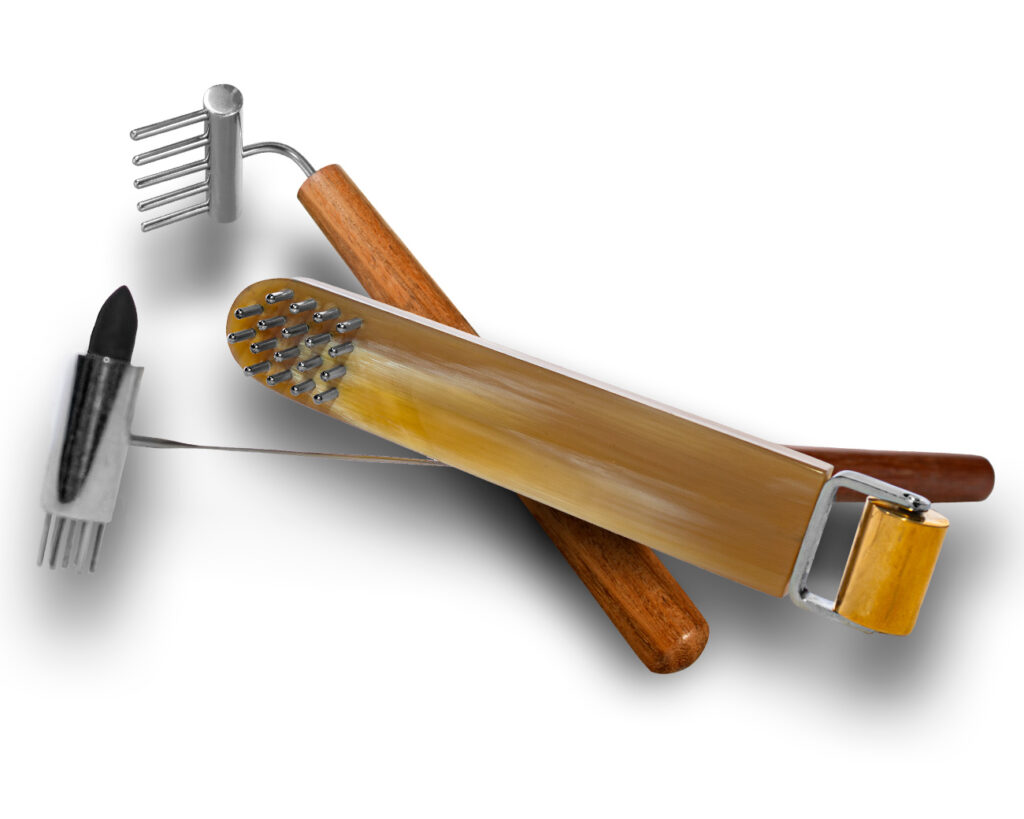
Your allies for applying an effective protocol and regaining harmonious sleep:
- The Yin rake nº416 calms the brain flows and releases accumulated tension to prepare your body for rest.
- The Beauty-brush nº252 stimulates the facial reflex zones to energise, promote drainage, and relax the facial features.
- The Small Hammer nº128 gently activates the bqc points to consolidate the treatment and extend its benefits.
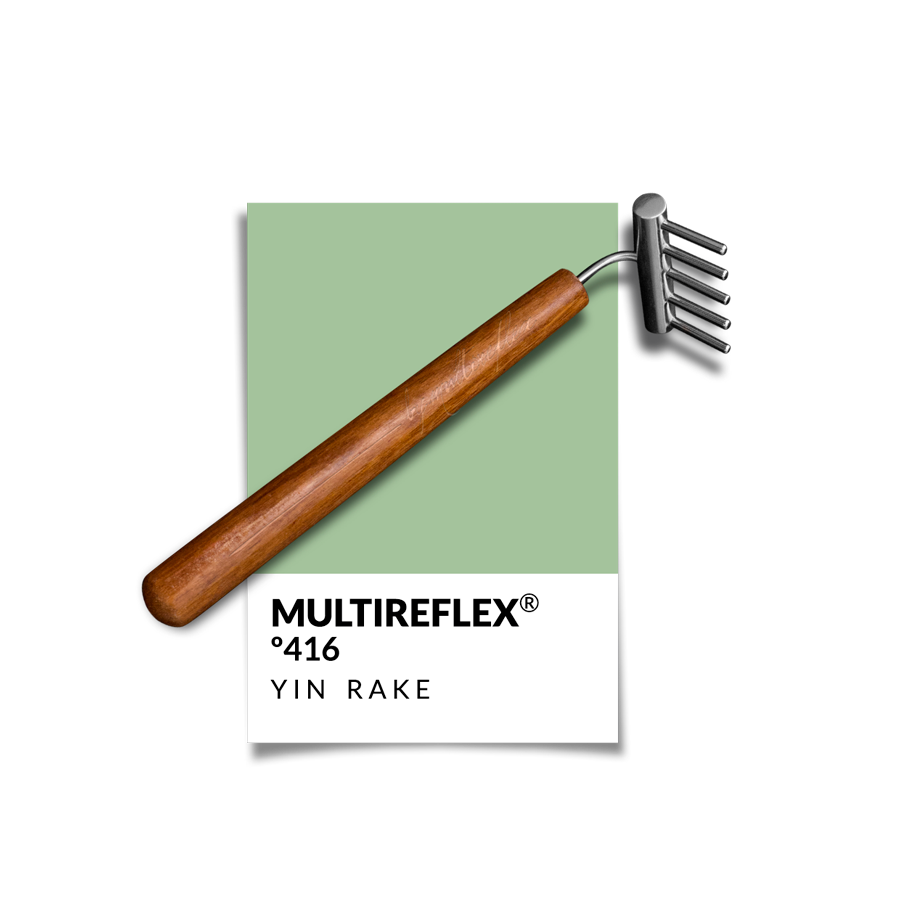
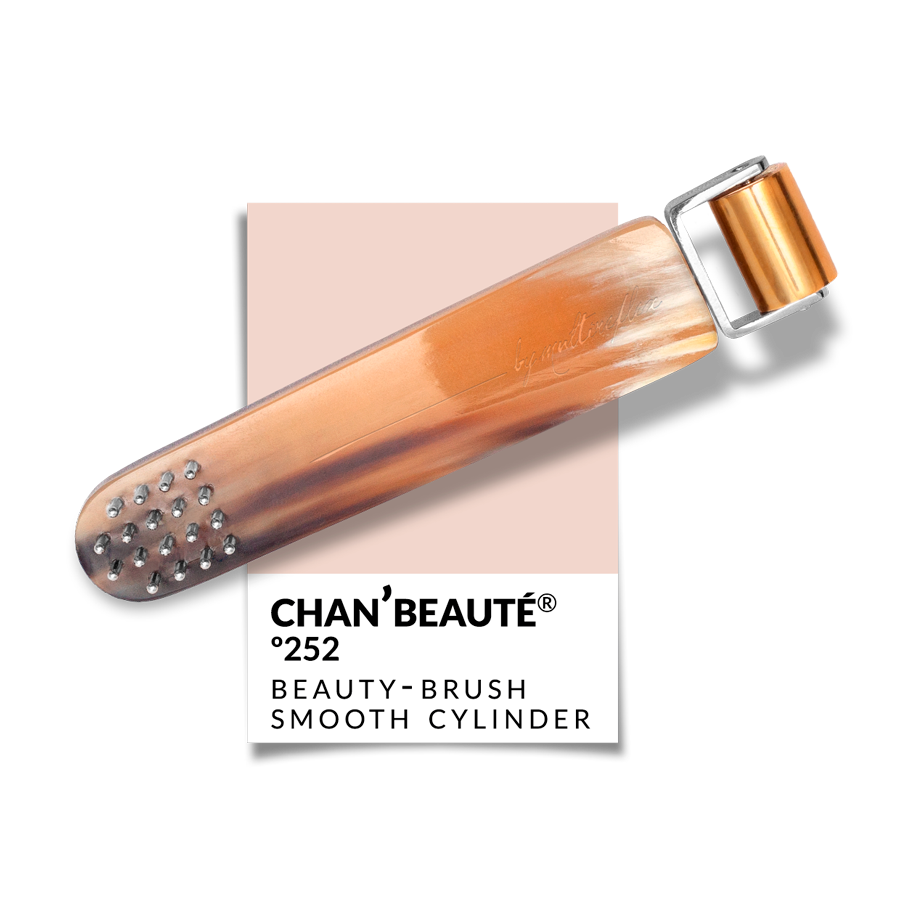

Natural aesthetics care plan
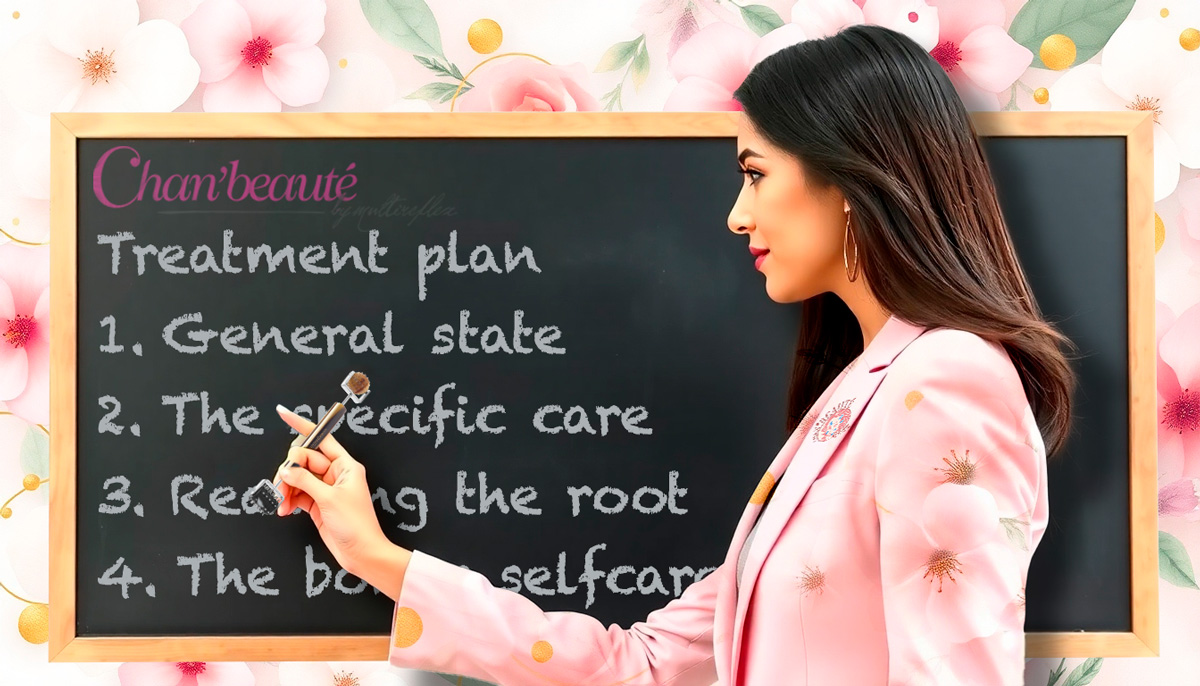
Bye bye lipstick and foundation!
#nomakeup is the new trending hashtag, thanks to the masquerade that has taken over!
Finally, all women can reveal their authentic beauty by following the natural aesthetics care plan.
Here is the Chan❜beauté care plan that will help you personalise your sessions.
But how will you enhance your eyes without makeup?

By understanding what your dark circles, puffiness, spots, or even small whiteheads are expressing.
The principle of Chan❜beauté is effective because it is simply grounded in common sense.
Our face reflects the state of our inner balance.
Every wrinkle, every scar, and all visible imperfections are external signs of tension, disrupted circulation, and other dysfunctions.
This is the entire strength of the concept of «chan»: diagnosing and treating at the same time.
To do this, you must start by considering the general state you or the treated person is in.
Here is how a care plan unfolds in Chan❜beauté:
1| General state:
— If you are stressed, use the «124·34· precedence» to regulate the nervous system.
— If you are tired, stimulate your vital energy with the «Yang formula».
— If you feel you overindulged in Splitz this summer, apply the «Detox ritual».
— If you suffer from acid reflux, use the «cardia massage» along the left wing of the nose.…
… and so on.
2| The specific care:

— To treat a specific wrinkle, you should always start with the «Yang~yin Prelude».
— To fade a spot, use a yin instrument such as the minirake of the multireflex tool nº219.
— To care for dark circles, the Beauty-brush is what you need.
— Find more details about the three skin types in this article.
3| Reaching the root cause:
By projecting the various reflex diagrams of Dien Chan, you can identify the potential cause of the dysfunction being expressed.
— For dark circles, it is most often fatigue caused by kidney weakness.
Then, you can complete the treatment with the bqc·points for kidneys (300· 45· 17· using the Little-hammer nº128) or by stimulating them with the mini yang ball of the Detector nº103 or the Yin-yang roller nº206.

— As for spots, it is often the viscera reflex diagram that indicates the implicated organ.
You then work on the reflex zone of the organ and aim to stimulate its precise bqc·points.
— In general, wrinkles prompt us to relieve muscle tension.
You should then use an appropriate multireflex body tool for the large area to be relaxed.
You can also enhance your treatment with a muscle relaxation formula (34· 1· 37· 38· 156·) applied using your Little-hammer nº128.

▸ Here’s how, in just a few steps, you’ll be able to personalise your treatment!
❉ To help you with each step, you can refer to the articles on this blog.
❉ In the interactive Chan❜beauté magazine app, all the protocols are detailed step by step. Additionally, the chapter «Venus’ step-by-step guide» walks you through solutions for various imperfections such as wrinkles, spots, and more.
✔︎ Discover how to install your free demo version to get an idea of the work provided: install.chanbeaute.pro
x| The bonus to ensure your clients are at their best:
The ideal is for your clients to talk about your work and praise your talent. Generally, people interested in natural therapies tend to be more eco-conscious and eager for new knowledge.
To make future sessions even more effective and help you address the root cause of the issue or imperfection, you should teach them a simple routine.
By offering the most suitable tool, demonstrate how just a few minutes a day can enhance the results achieved.

— For wrinkles, use the Double mini yang ball nº307 the affected body area.
— The Little-hammer nº128 is highly appreciated because it allows for sporadic daily stimulations. Remember that frown lines are often a sign of tension in the shoulder girdle (shoulders and neck). It’s also very practical for relieving headaches with its soft mini-rod head.
— To continue treating rosacea, a yang symptom, recommend the Double yin miniroller nº308. 1 minute per cheekbone 2 to 3 times a day will convince them of the effectiveness of your advice.
— The minirake of the multireflex tool nº219 will be very useful for continuing to fade spots as well as for alleviating hot flashes with its golden brass cylinder.
We do not recommend selling the Point·bqc Detector, as it is quite challenging for beginners to accurately locate the precise points to stimulate.
However, the Comet detector nº133 is highly suitable for massaging the sides of the nose to relieve gastric acidity and for practising the Reflexdrainage protocol. Encourage them to request the PDF and video on www.DienChan.zone.
In short…
The point is that information alone is not power. It’s your talent and teaching skills that will set you apart.
Show the chart you use, provide explanations, and give meaning to your care.
Your clients will be deeply grateful for this.
❉ If you’re missing any multireflex tools, you can also purchase kits at the best prices from kits.dienshop.com
▸ Subscribe to the channel www.DienChan.tv so you don’t miss any of our live broadcasts!
You’ll also be able to watch replays and many videos offering tips and complete treatments.
—The Educational Team of Dien Chan Experts—
Choose your city and training dates: training.Multireflexology.com
Check if the trainer is part of the Dien Chan Experts team: www.DienChan.pro
Official school website: Multireflexology.com
